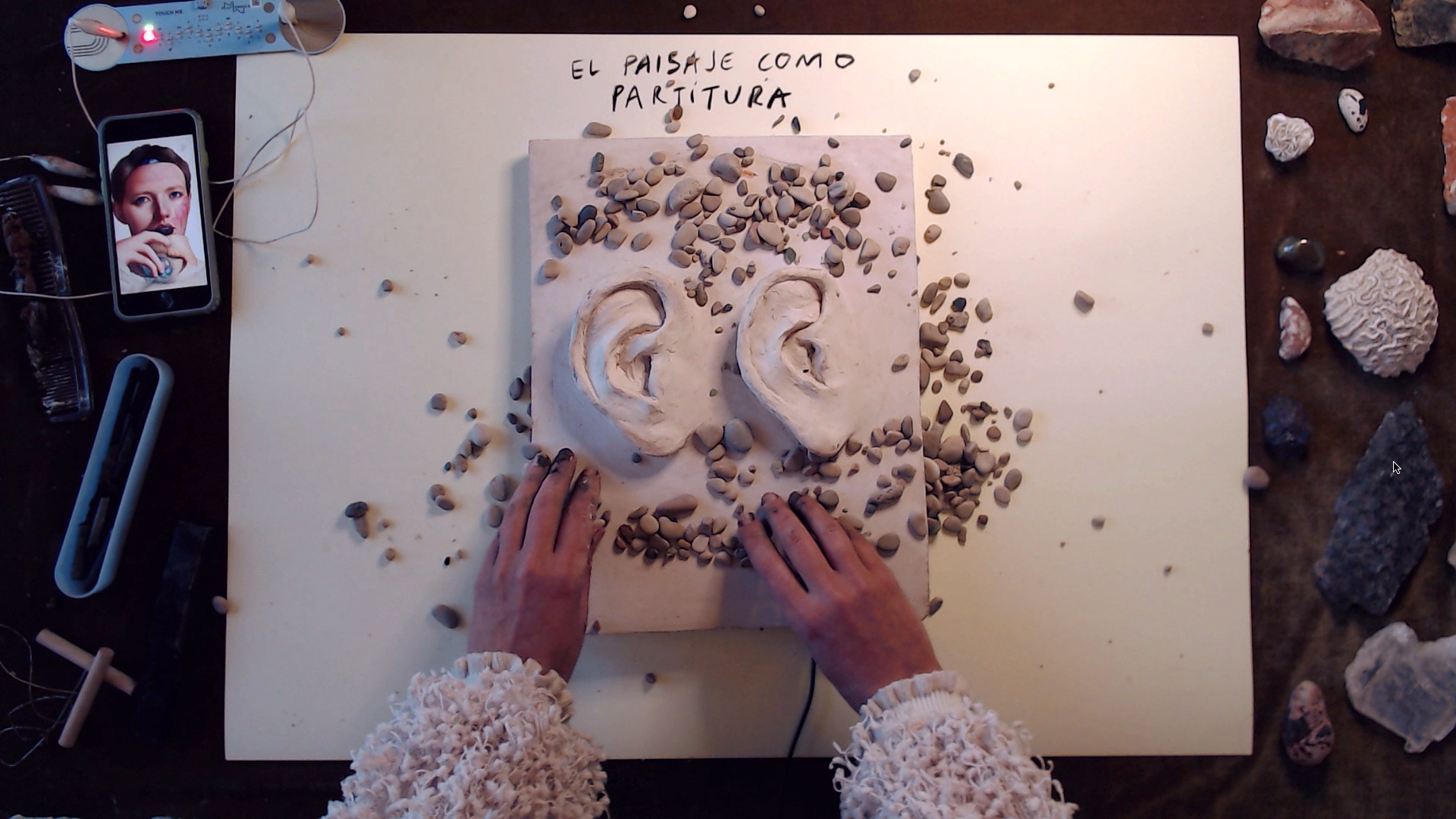Cantus / Discantus
Coco Moya (2023)Produced an exhibited at Etopía Art Center (2023-2024)

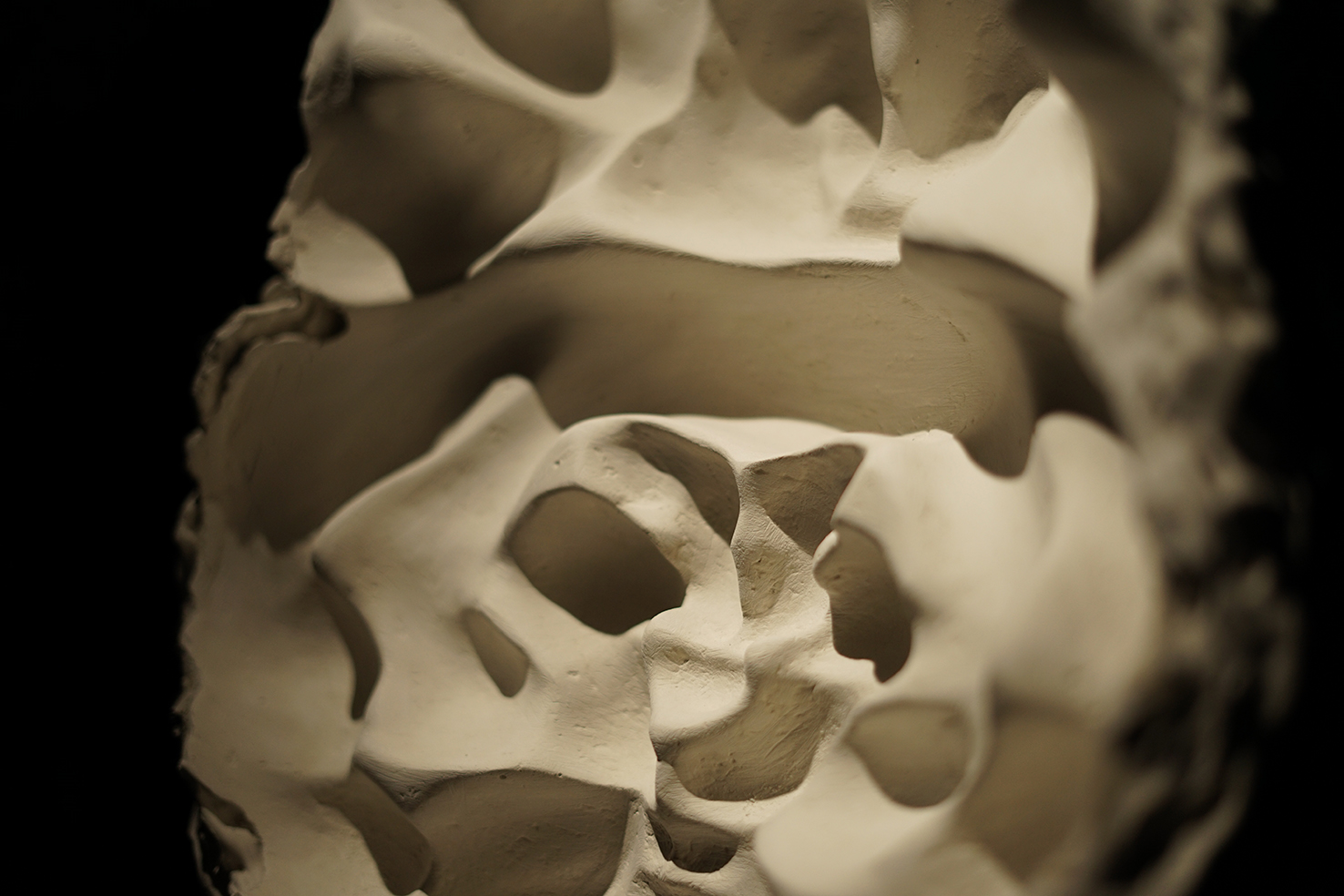

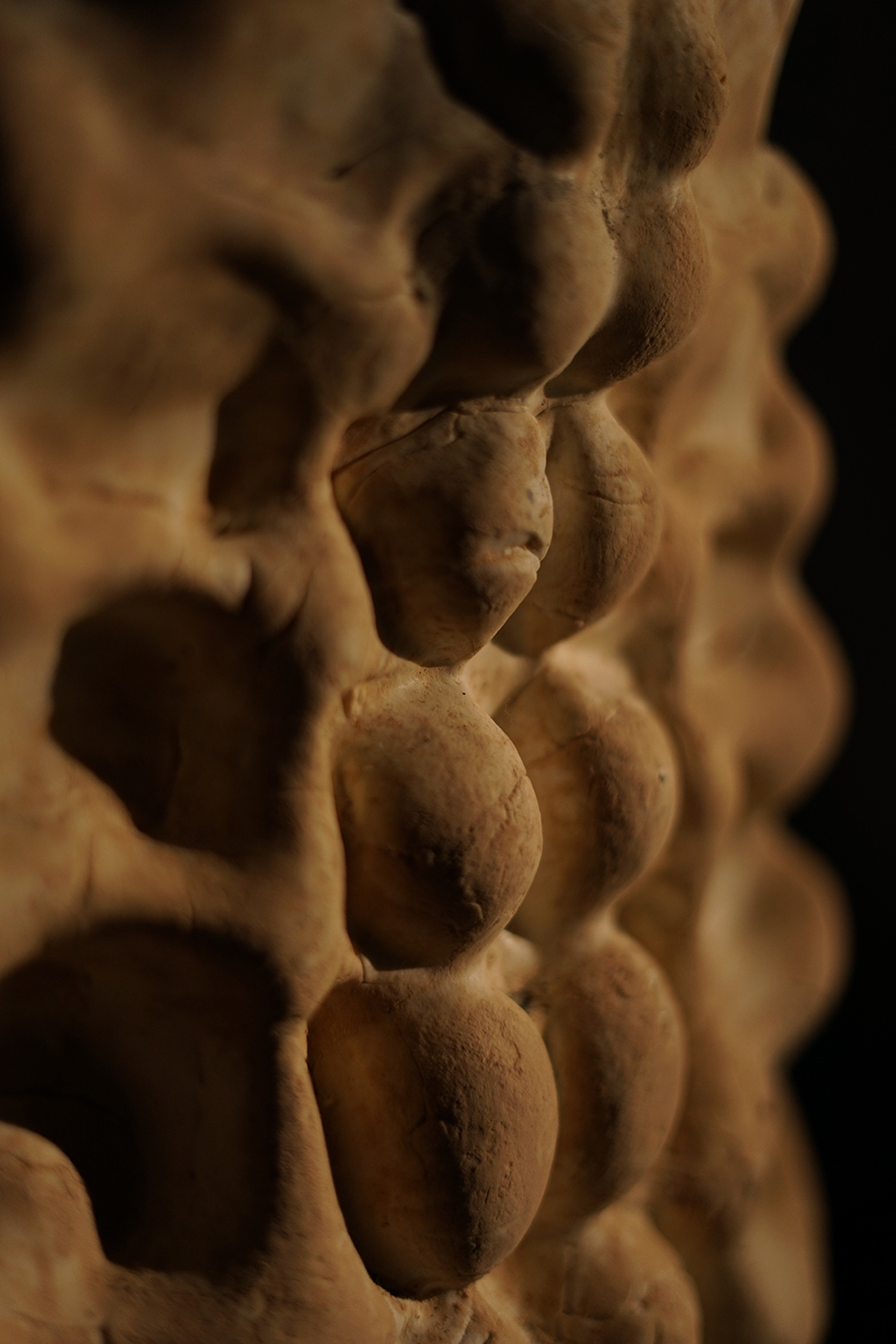






Coco Moya. Cantus Discantus. Exhibition view. 2023. The sculptures are singing and talking, creating an expansive posthuman choir. The exhibition shows the yeast molds and the porcelain results, as other parts of the process.







Coco Moya. Cantus Discantus. Sketches made with AI and 3D Modeeling for CNC. 2023. This forms are imagined together with an AI and build in the fablab using CNC and 3d modelling.
An immersive sound installation of sculptures created with artificial intelligence.
Cantus/Discantus is a research process that has developed in part during Coco Moya's residency in Etopia. The research process was divided into three branches. First, making the sketches with various image generation artificial intelligences. On the other hand, experimenting with materials, mixing porcelain with yeast. And, finally, the Pyrenean polyphonic song as a structure of relationship with the environment. The work focuses on the idea of polyphony beyond human. A choir of earthly voices where each sculptural piece is a mouth that sings. The Cantus / Discantus process is based on a dialogue between the will of the artist and artificial intelligence, clay and yeast, thus delegating authorship in a format coral that exceeds the human. This idea of a head that sings, of a person (being that sounds), of a character or mask, is the symbol of that need to find points of contact, binding surfaces between the internal and external, which swell and deflate. Stomach-heads that process, return, incorporate and regroup the materials. If all art is made for a people that does not yet exist, say Deleuze and Guattari, this is a song that sings to a place that does not yet exist. A radical de-territorialization, in permanent openness, birth and therefore also death - a song of lullaby and requiem -, a place where everything begins and everything ends, in that porous, concave, convex, cave skin.
This interdisciplinary methodology hybridizes the artisan and digital manufacturing, the sound with the haptic, which it is not known if it travels to prehistory or to posthistory. A collective imagination is thus intertwined, which brings together voices of many others, to return to us like an oracle a speculative vision of the world “that could be.” The reflection of a polymorphic, mutant, strange collective subconscious... Repellent and attractive at the same time. An uncomfortable soft power, psychedelic but sensitive, where every ambiguous lump, every gap, every concave and convex surface excites our aesthetic-mystical imagination.
More info: Etopia Art Centre
Triptych Tropes
Coco Moya (2023)Performed and exhibited at UCM Fine Arts School (2023)


![]()
![]()
![]()
Coco Moya. Triptych Tropes. Performative conference. Video Capture. 2023.
Coco Moya. Triptych Tropes.
Performative conference. 2023.
︎ ENGLISH SUBTITLES AVAILABLE ︎
Download PDF ︎︎︎
Sound Geomancy, Landscape as score
Abstract
This research, entitled «Sound geomancy. The landscape as a score», deals with how aural thinking is essential to establish a dialogue with our environment and with our inner selves. It wonders how technology, music and nature are assembled in the landscape through the metaphors of sound. Introducing references from the art practice, the musical ethnology, the field of archaeoacoustics and the media archeology, a geo-sonological story is is presented, beginning in prehistory and continuing in Post-history.
When it comes to give meaning, create knowledge, and navigate the world, we can find echoes between indigenous cosmologies, -intended as popular, pagan, and ancestral practices of relationship with matter/spirit-, and the technological culture. Post-internet network culture relies again on magical thinking, according to which all beings -living, non-living, almost living, human, non-human and more than human- are intertwined in resonant kinships. Sonic imagination becomes a geological imagination that crosses the strata of history through musical metaphors and metonymies. In contemporary art practices that use technology to create intelligent objects and places, giving them a voice, listening to their inaudible lives, there is the same ancestral need as human beings to integrate into the world. The place, overcrowded with materials that are media, objects that are alive, voices and memories, is the starting point for works and compositions that are trying to read the landscape.
The territory is crossed by telluric energies and inhabited by cyborg amalgams, shaping a polyphonic writing. One can take it as a score that can be interpreted using rhythms and melismas playing with all this elements and putting them in contact. This is what we call speculative listening of a place, which can intuit with the sound the forces that inhabit it. Under these premises, sound geomancy is formulated as an open tool. A methodology for the interpretation of a place through a more relational than representational kind of music. Transcendental in its wildest materiality. Sound geomancy, in short, proposes a sort of interaction with a complex and interdependent environment, which includes the immense human capacity to imagine, inhabit, and create the world through hearing.
Keywords: sound art, site-specific, geomancy, speculative listening, antropocene, interactive media, sound studies, media archaeology, archaeoacoustics, ethnomusicology, contemporary art.
*********
PhD Presented at Complutense University of Madrid, 16th January 2023, classified as «Excellent» with a distinction «cum laude» given unanimously for her doctoral thesis.
Thesis Committee: Bárbara Fluxá, Concha García, Paz Tornero, Mikel Arce y Miguel Molina Alarcón.
Coco Moya Laboratory of Art and Research
Magic by contagion
Coco MoyaPerformed and exhibited at
Cruce Gallery, Madrid (2021)
La Panera Art Center, Lleida (2022)


 Lithophones, Stones, Speakers, Sound, Coco Moya (2021)
Lithophones, Stones, Speakers, Sound, Coco Moya (2021)

 Tenebrescencies, Drawings A4, Graphite and invisible ink, Coco Moya (2021)
Tenebrescencies, Drawings A4, Graphite and invisible ink, Coco Moya (2021)


 Not everything is connected to everything, but everything something is connected to something. Copper wire, ceramic, tin, arduino, speakers, sound. Coco Moya. (2021-22)
Not everything is connected to everything, but everything something is connected to something. Copper wire, ceramic, tin, arduino, speakers, sound. Coco Moya. (2021-22)



 Soroll. Drawing on wall, ceramics, speakers, audio. Coco Moya, (2021)
Soroll. Drawing on wall, ceramics, speakers, audio. Coco Moya, (2021) The water meditation. (For Menhir) Ceramic and salt. 20x20cm, Coco Moya, 2019-2020
The water meditation. (For Menhir) Ceramic and salt. 20x20cm, Coco Moya, 2019-2020

Salt clock. Installation. Salt and stethoscope, Coco moya (2021)



Geomantic pendulum. Installation, Ceramic, glass, meteorite, magnet, resine, quartz, aluminium. 40x40x50cm. Coco Moya (2020-21)


Self ASMR. Set space for a self-ASMR (using a piece from a previous project “We do not even know if we exist”, made with Rafa SMP) Ceramic, Microphones, headphones, stones. Variable sizes. Coco Moya and Rafa SMP. (2020-21)
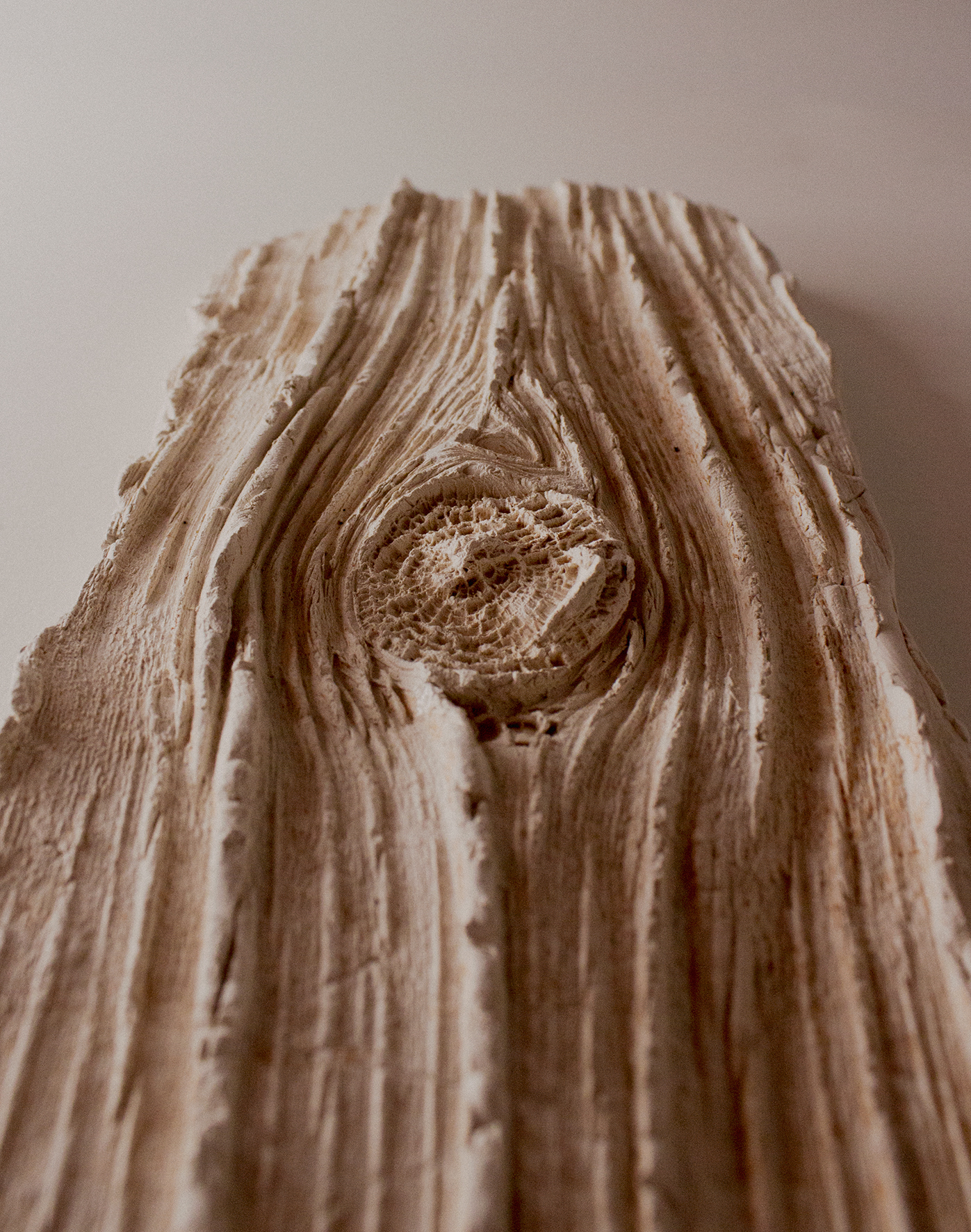
 Ceramic. Various Sizes. Coco Moya (2021)
Ceramic. Various Sizes. Coco Moya (2021) Video of the exhibition
Magic by Contagion -speculative listening and geological imagination-, is an exhibition about the resonances between indigenous thought, -popular, pagan, and ancestral practices of relationship with matter/spirit- and technological culture, when it comes to making sense, forming knowledge, and navigating the world.
Is about how sound and musical strategies are put into play again and again, before and now, when it comes to establishing a dialogue and a relationship with our environment, and with our intern. How technology, culture, nature and the material are related within the landscape from the metaphor of sound and tactile?
The territory, traversed by telluric energies, and inhabited by cyborg amalgams, forms a polyphonic writing that can be interpreted, through rhythms and melismas that touch the places and put them in contact. Post-internet networked culture re-emerges the idea of magical thinking where all beings, living, non-living, near-living, human, non-human, and more than human, are intertwined in "alien kin."
The minerals in my body also live in my phone and in the mines.
Listening and sound imagination become a geological thought and imagination, which navigates and crosses the strata of all these stories in metaphors and musical metonymies, the basis for a sympathetic, empathetic or contagious magic. In this game of reflections and reverberations, the environment is also our interior, in a mirror game with the landscape.
The works shown, almost all with a tactile or interactive component, invite the listener to experience and experiment, and make up an archive of plastic and sound essays that arise, on the one hand, from my doctoral research entitled "De techno- sound geomancy, the landscape as a score”, where I investigate the interpretation of the territory from intuition and what I call speculative listening. On the other hand, these pieces also arise from work in the Menhir collective, together with the musician Iván Cebrián, and in other experiences with Rafa Sánchez Mateos-Paniagua, María Collado, or Vanesa Bejarano. All networks that also make up a creative space permeable to contagion.
In the works, a way of knowing from the body is manifested above all, which must move, act, and investigate things with the palms of its hands and its palpitations, in an aesthetic proprioception. If listening is a form of contact at a distance, as Murray Schafer would say, it would be about making that contact more intimate, perceiving the sound going through the materials to our skin and our bones.
The sound happens, (from ad-proximity and contingere: touch), in that event, we put ourselves in closeness and contact with everything that in turn listens to us. And in that capacity of the metaphorical imagination to transport ourselves, we discover ourselves on a journey towards microcosmic scales, as Caillois would say about his stones.
Topocosmos that enable us to listen speculatively to the landscape, an interpretive reading of the genius loci that opens up new unpredictable sound territories. An attention to materials and to matter as a medium in itself, as a means of transmitting energy and memory. Common stones and ordinary materials, which activate their metallic, ceramic, resinous or saline flows, through sound.
Coco Moya (2020-ongoing)

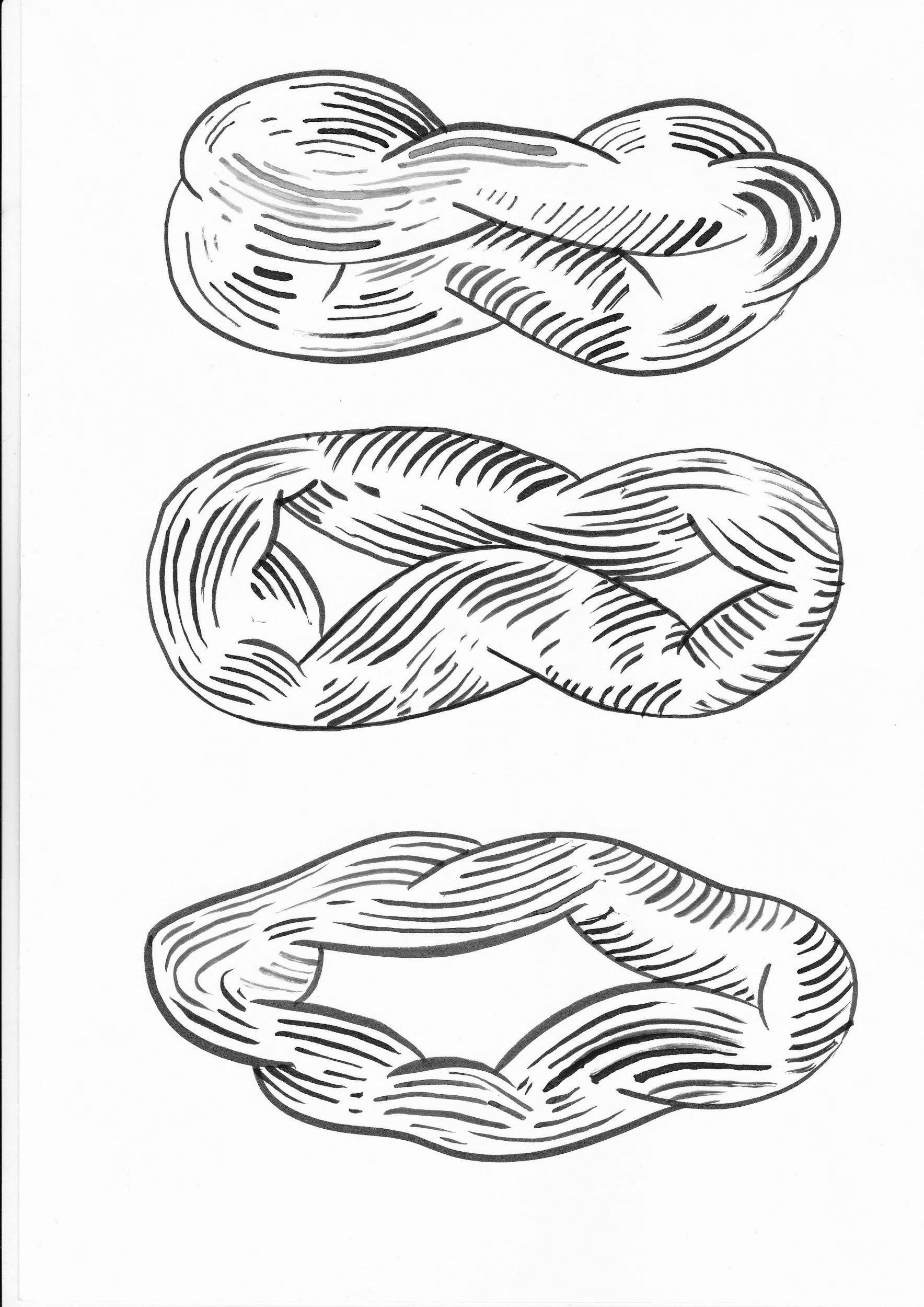
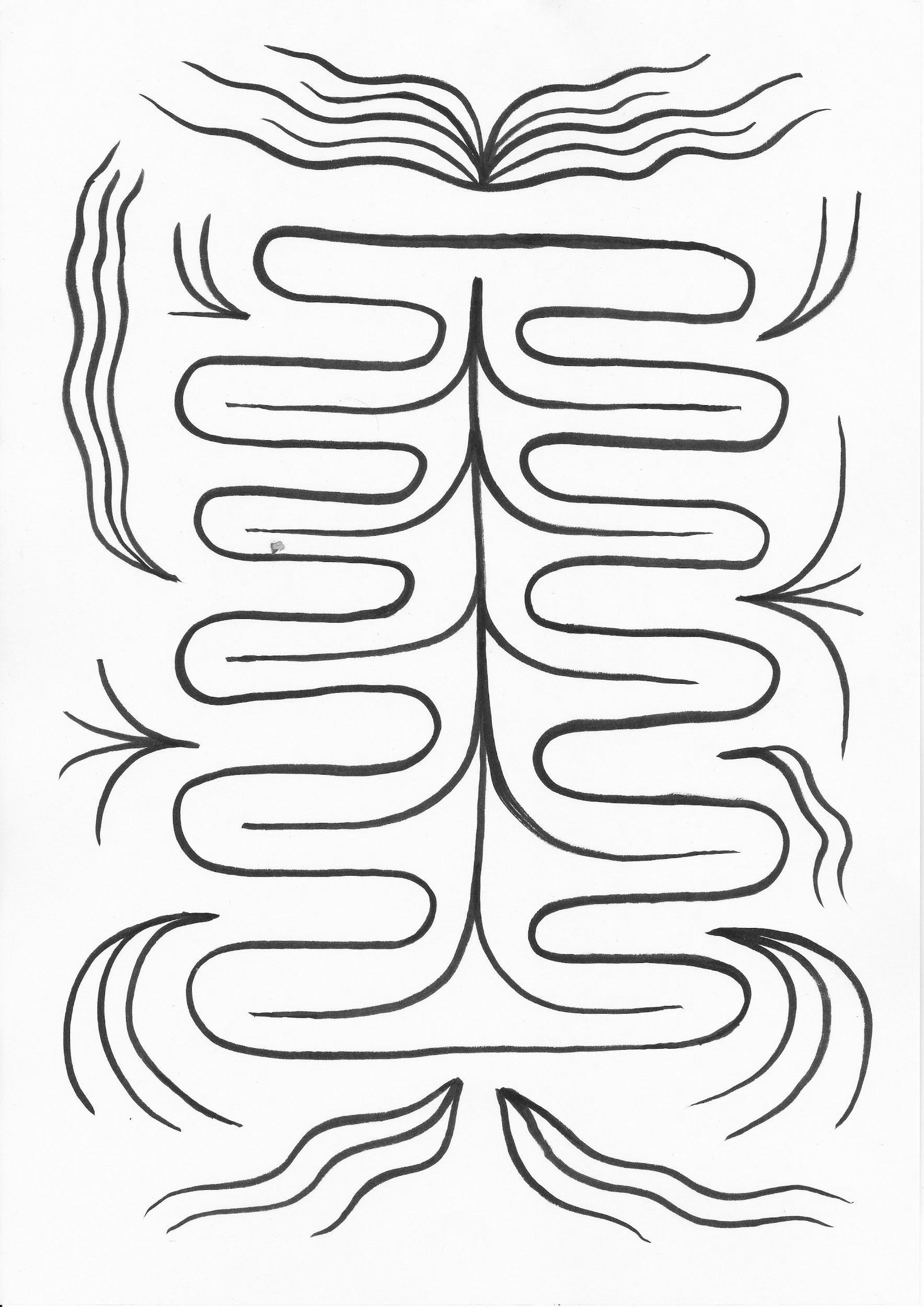
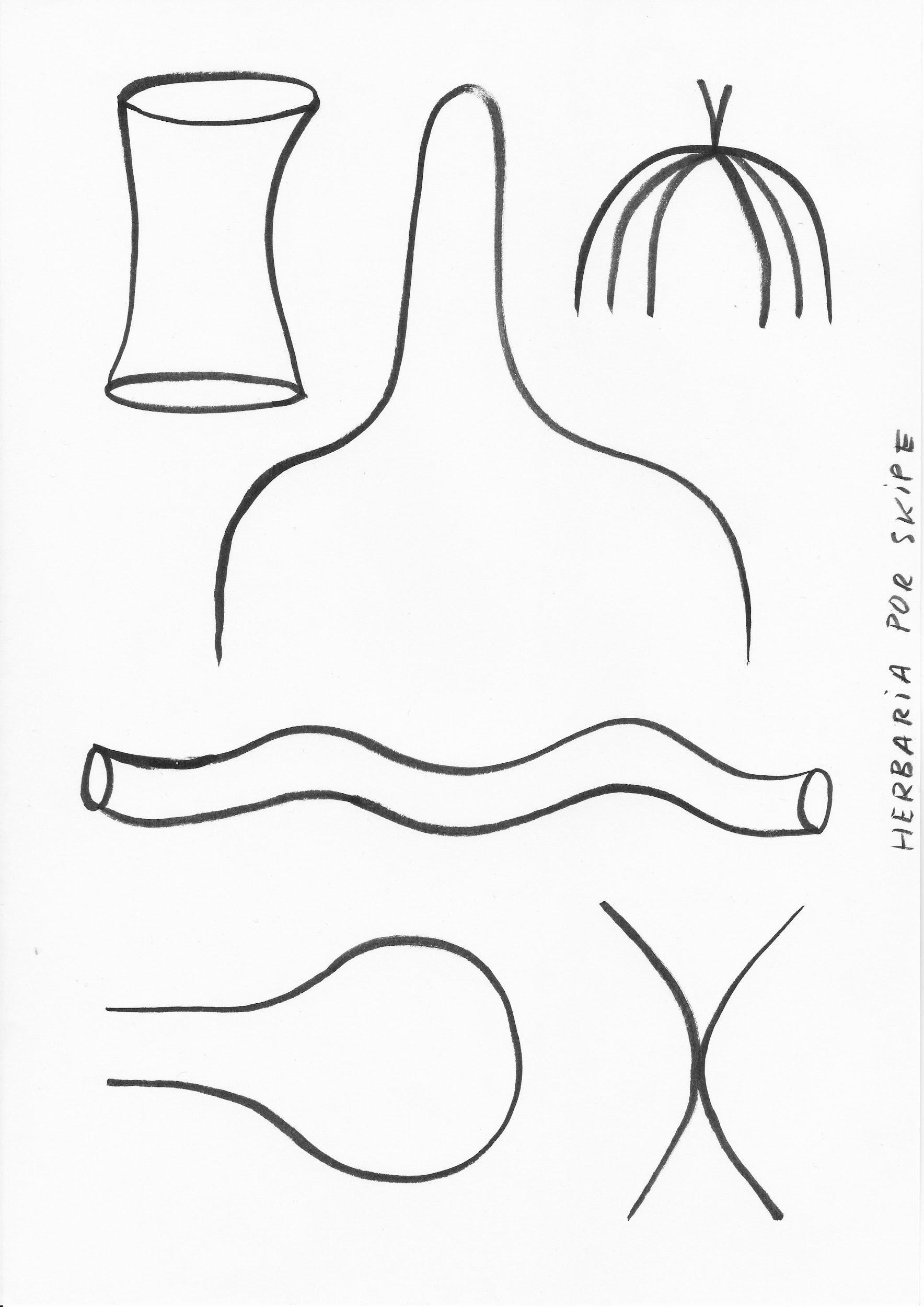
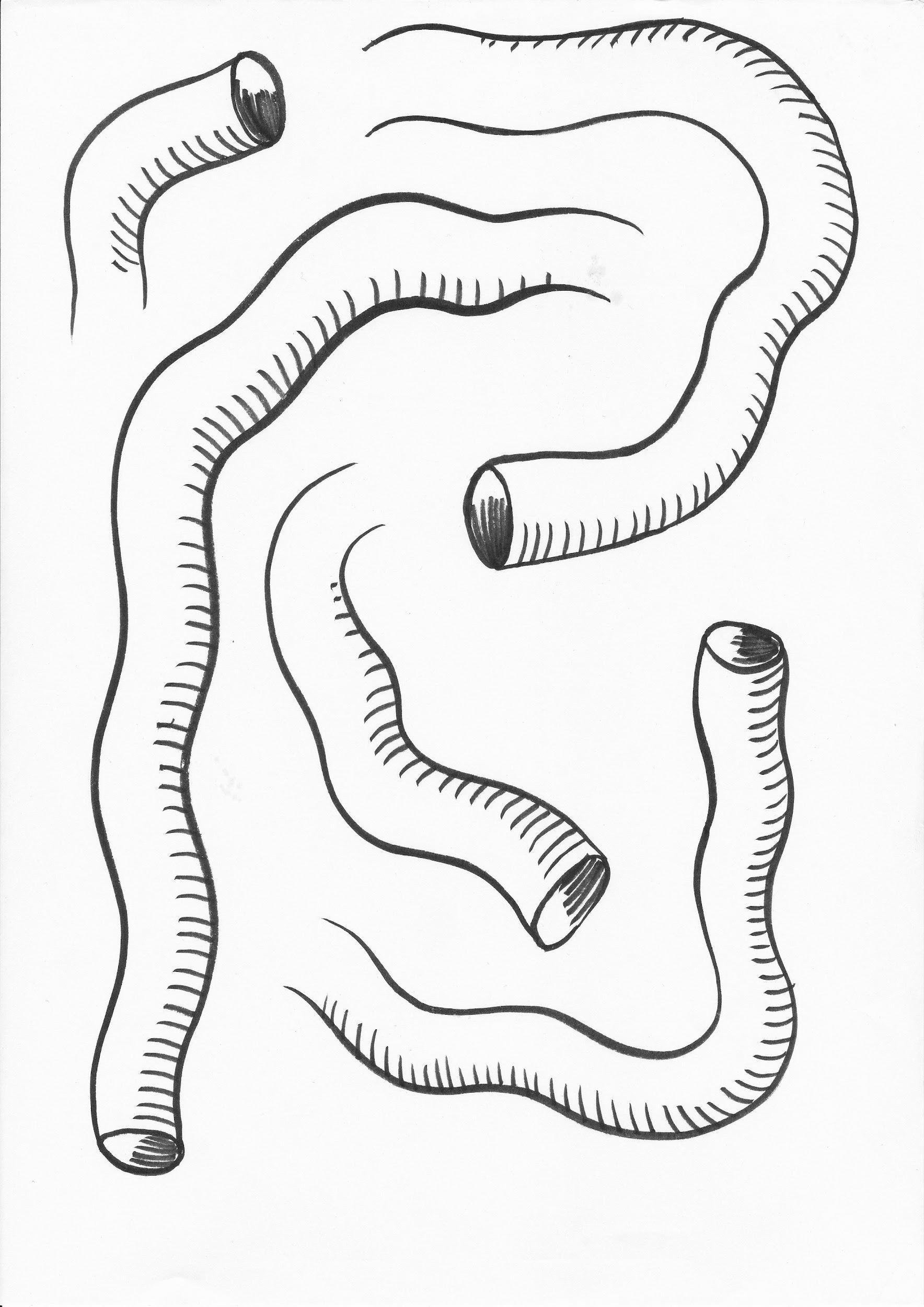


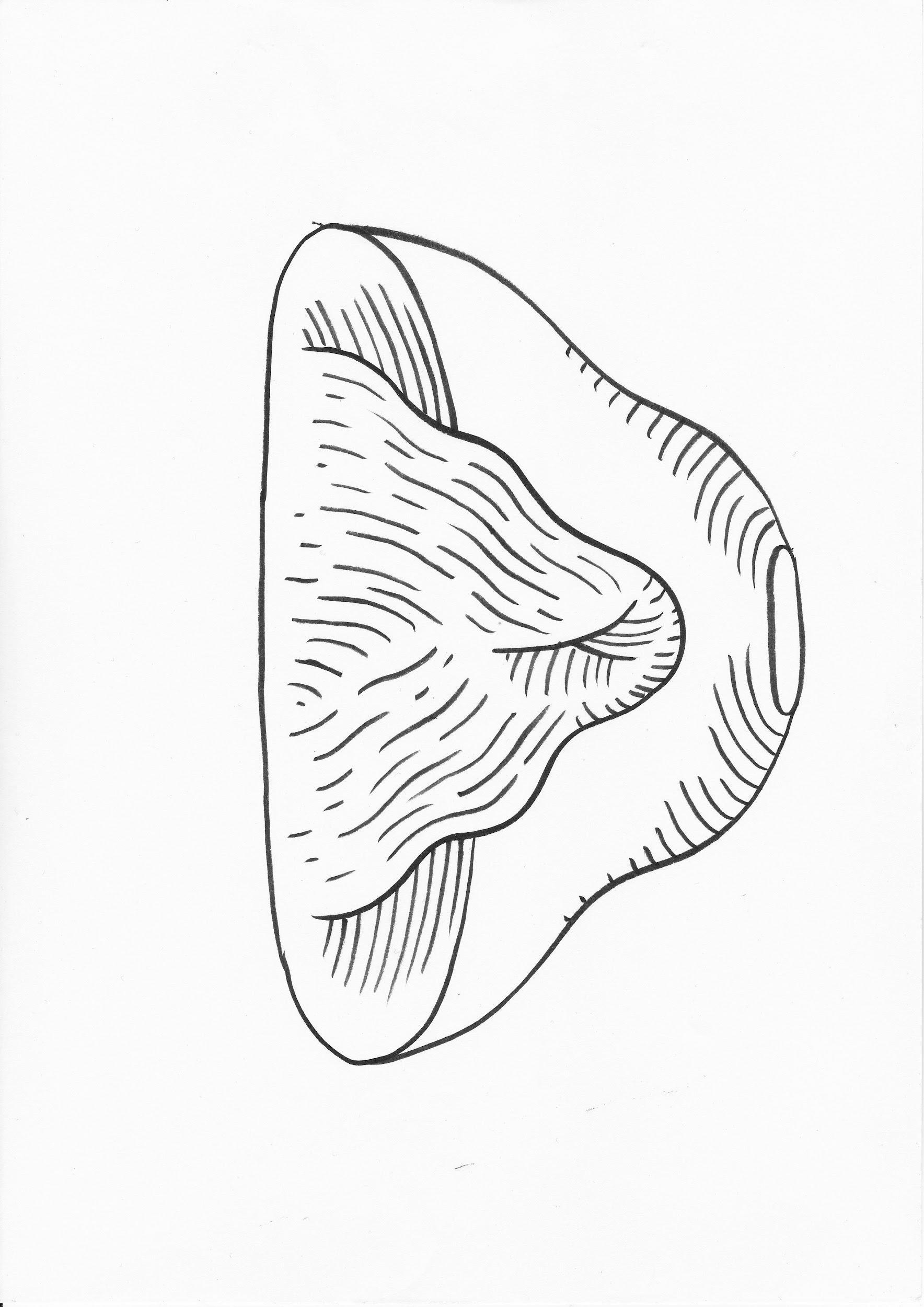
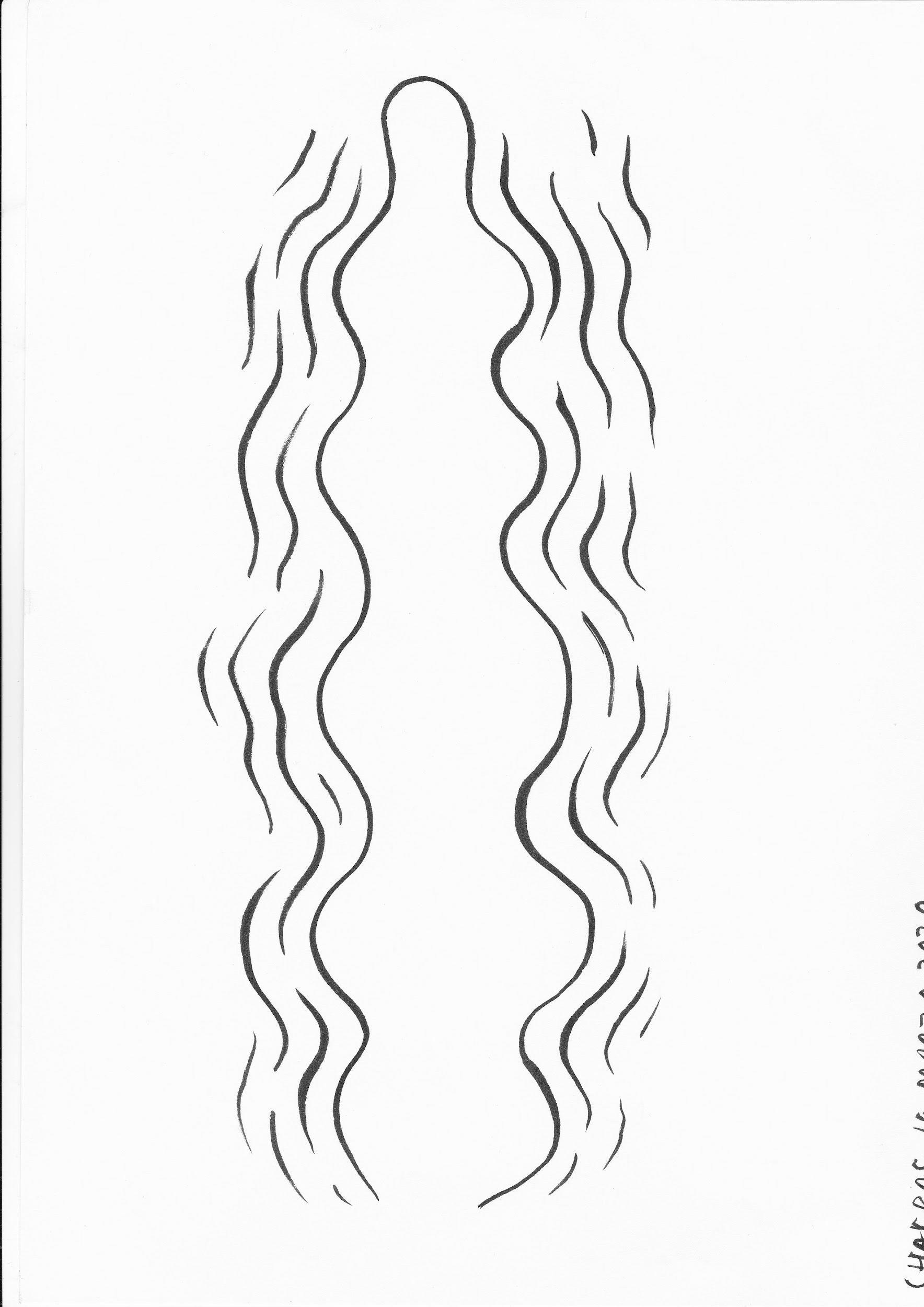
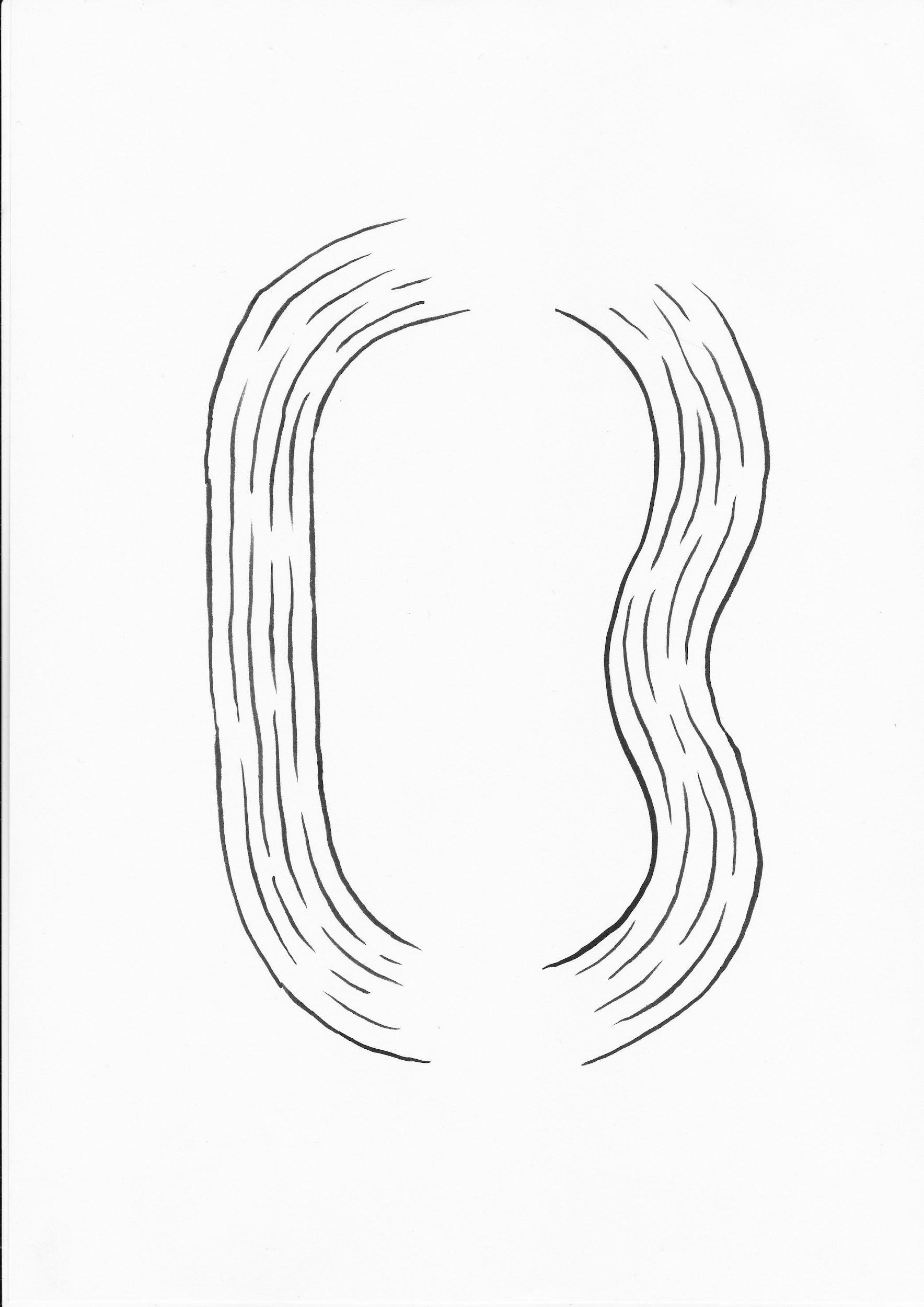
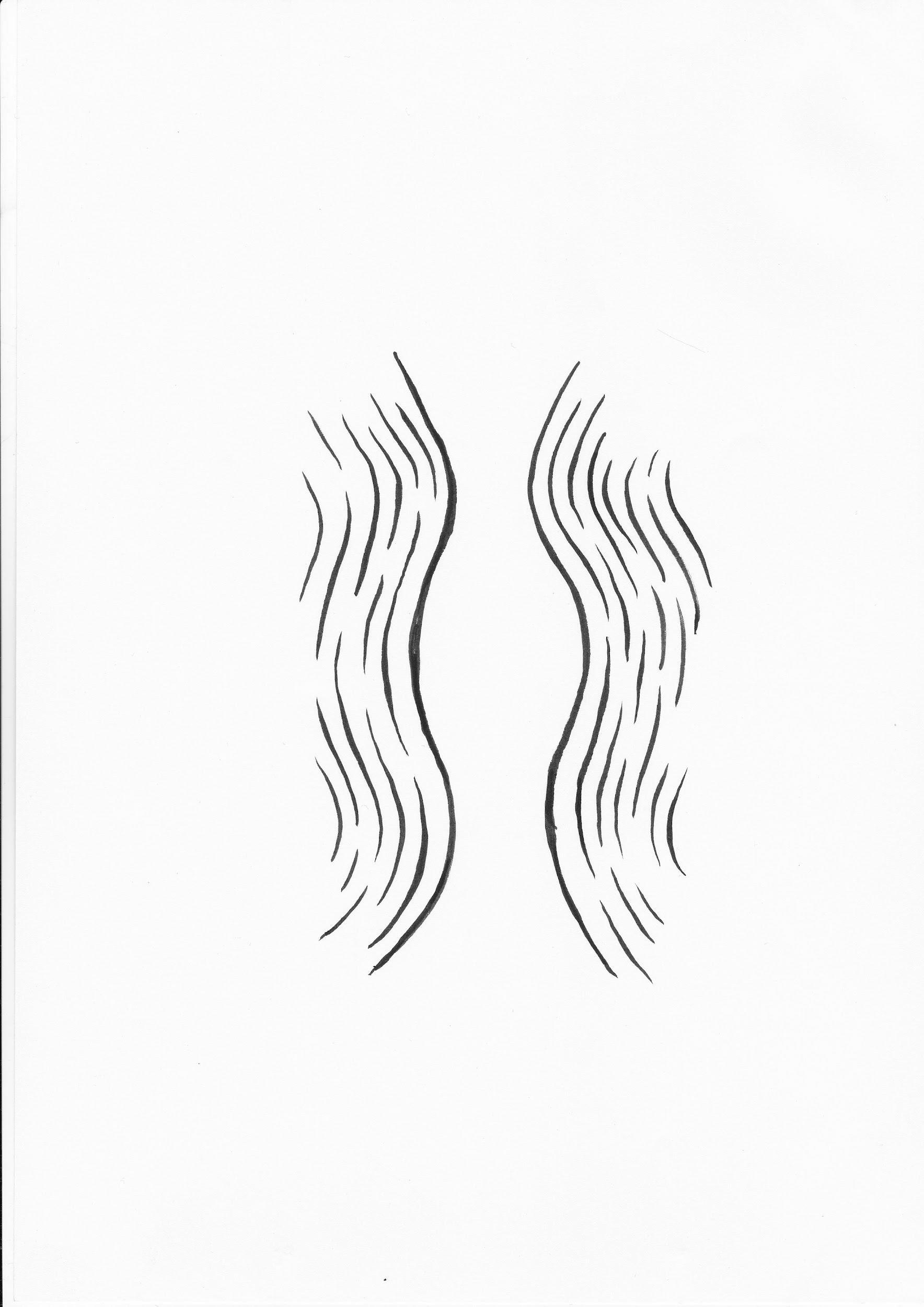
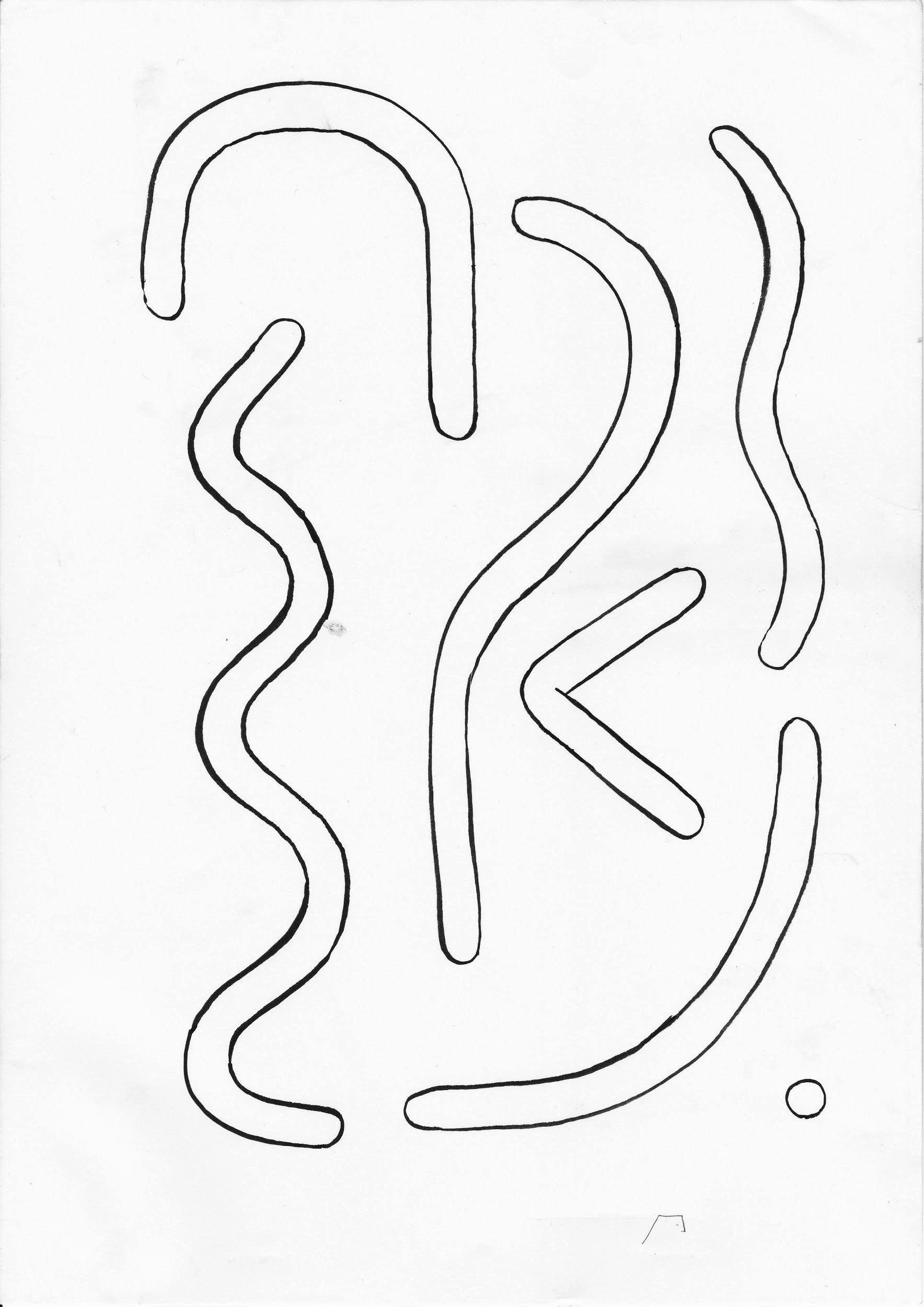
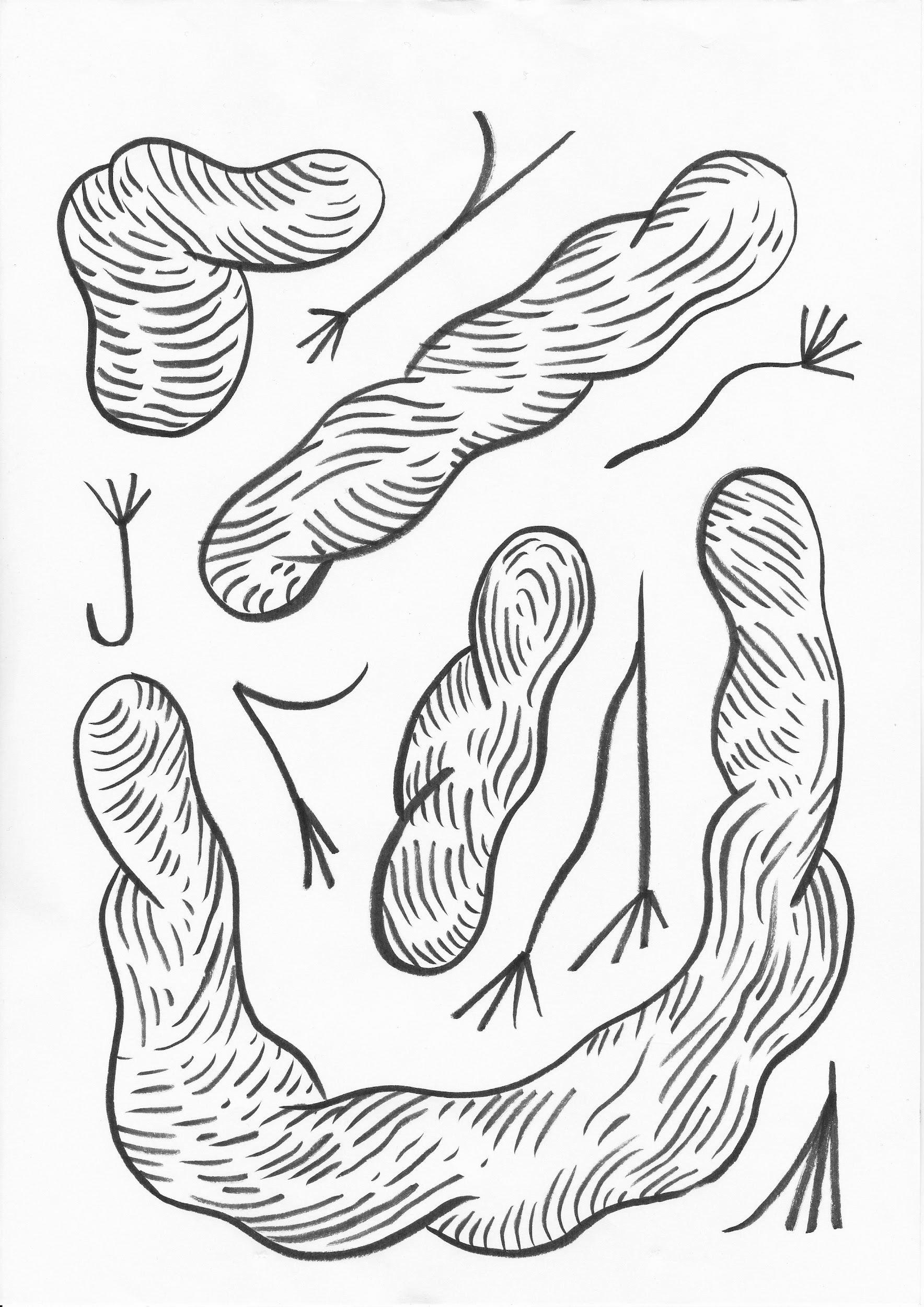
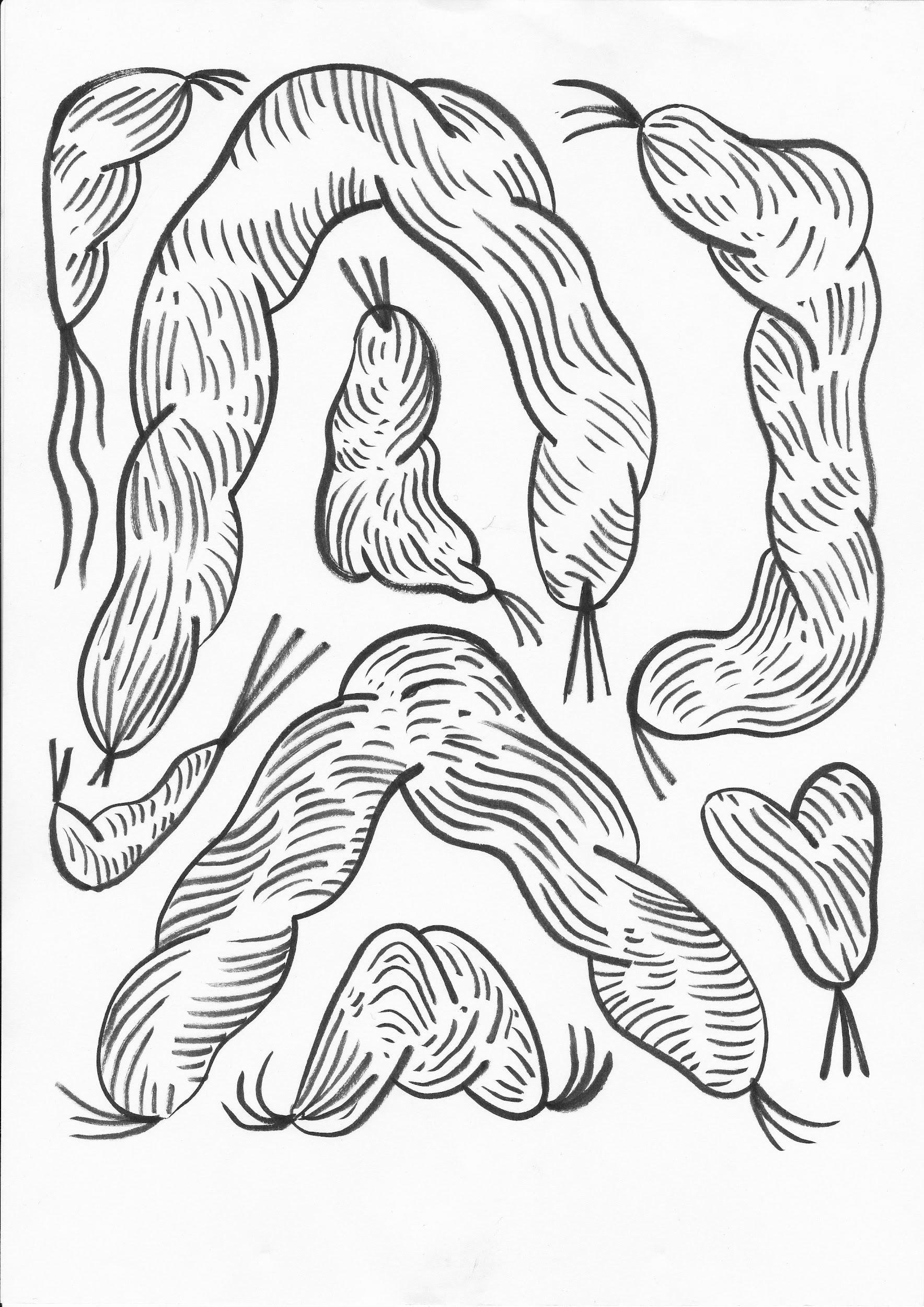
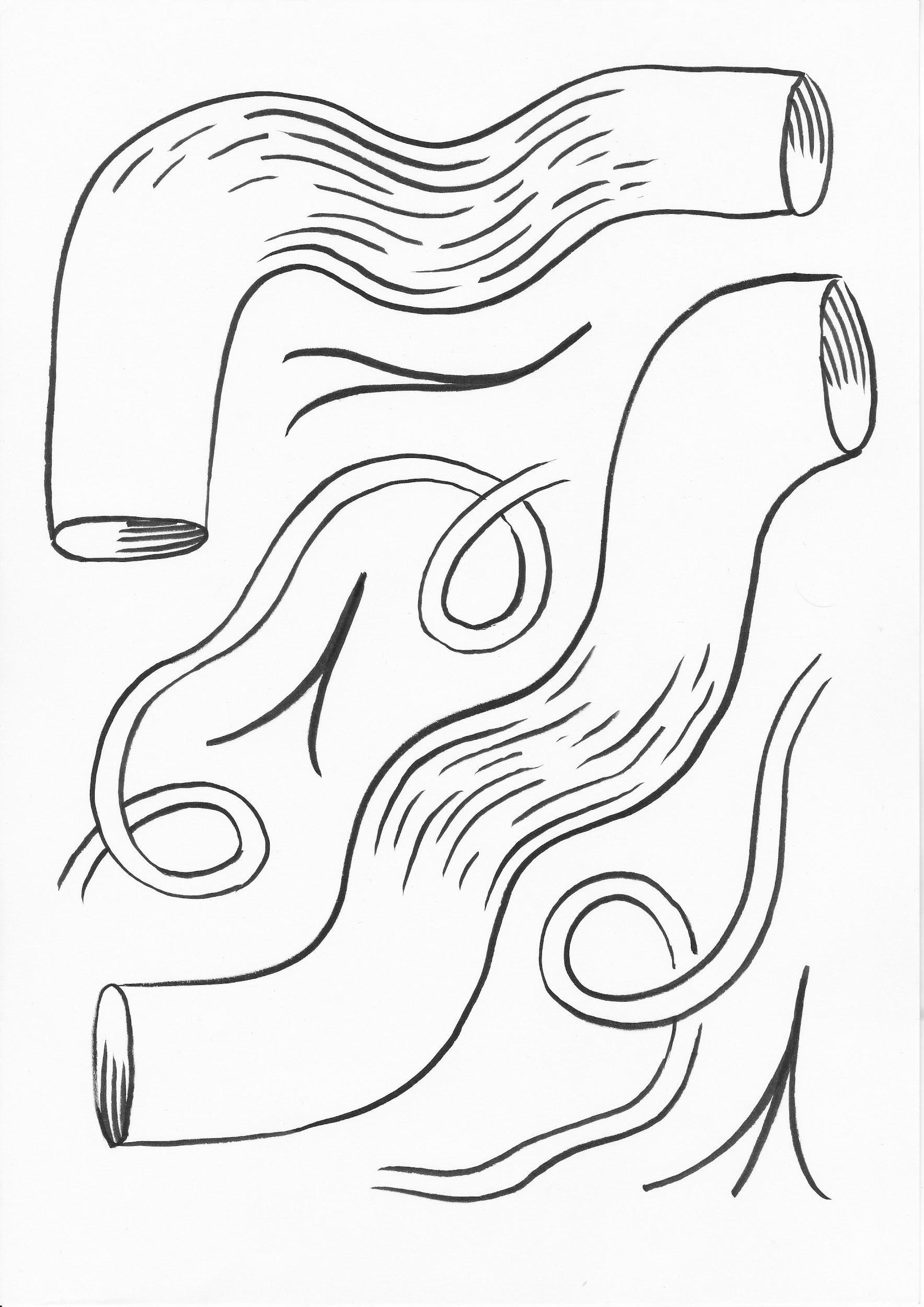
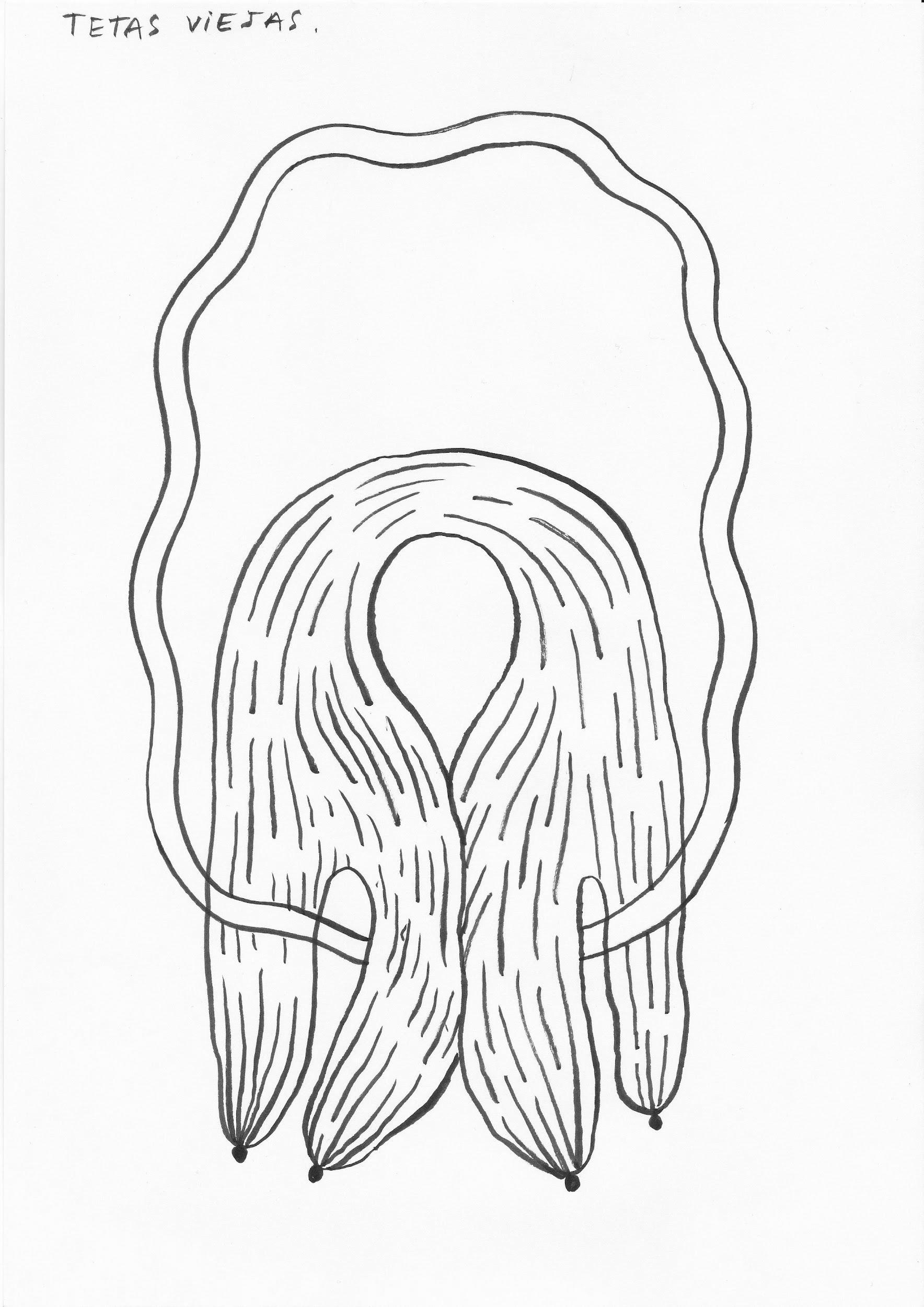
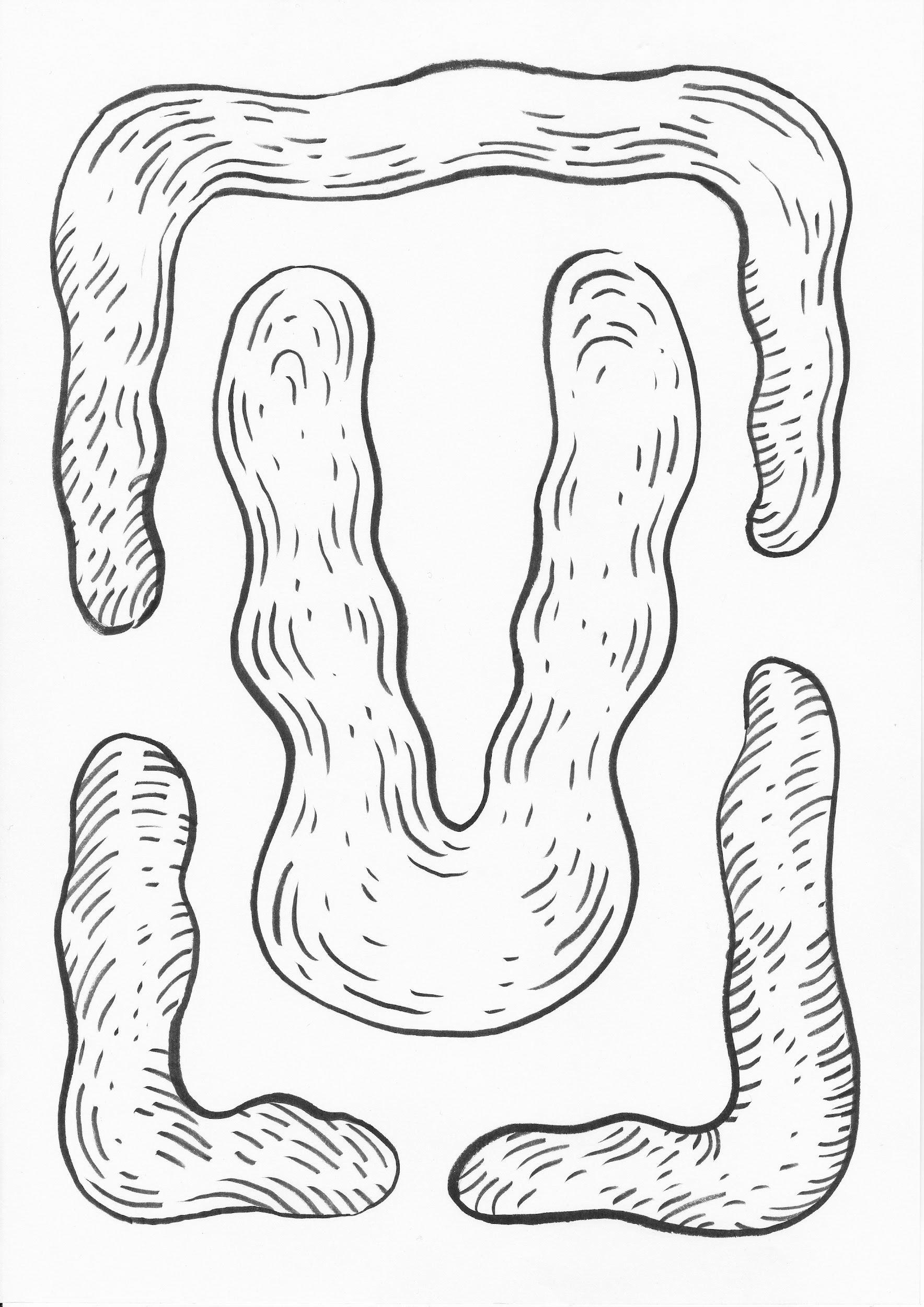
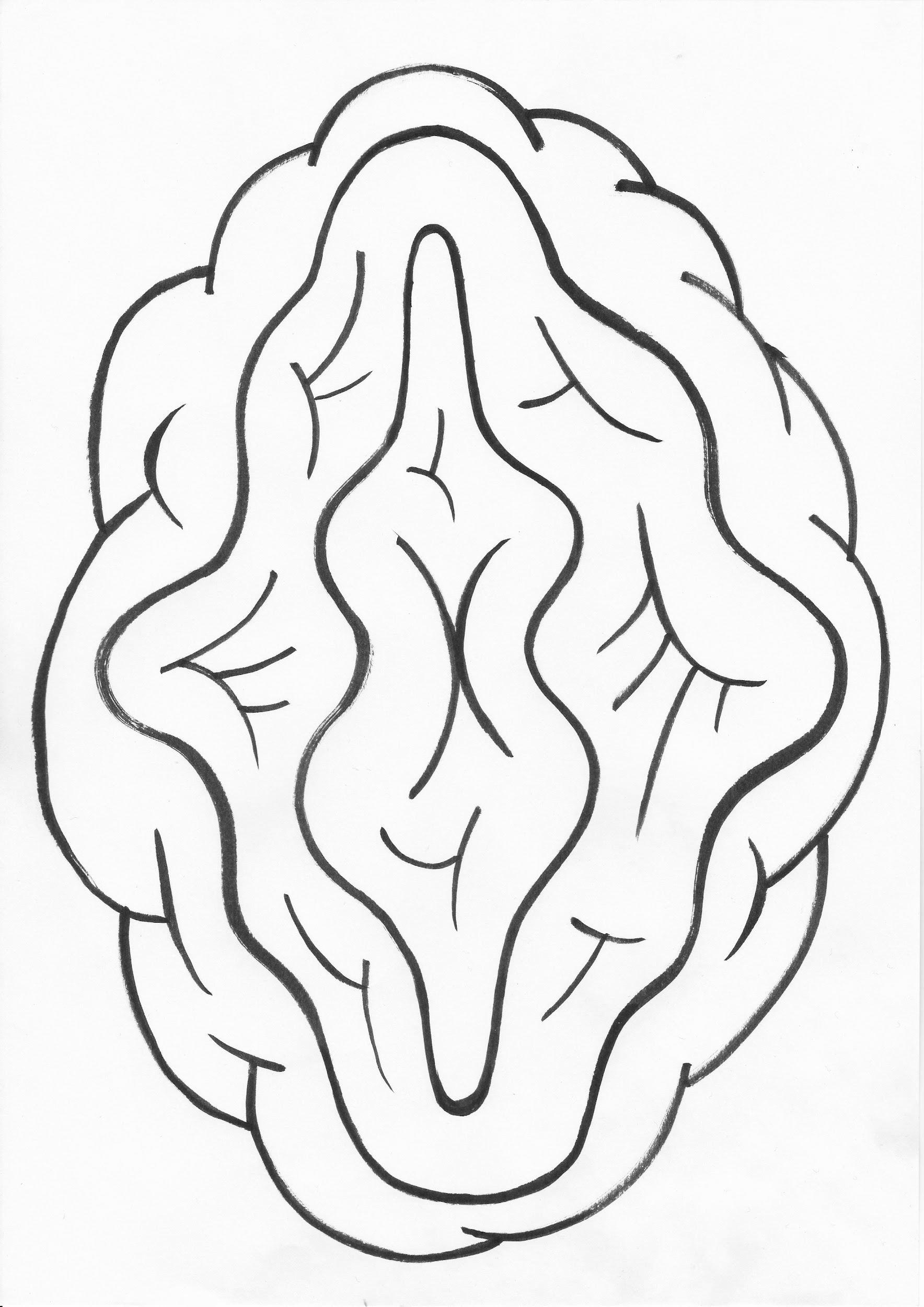
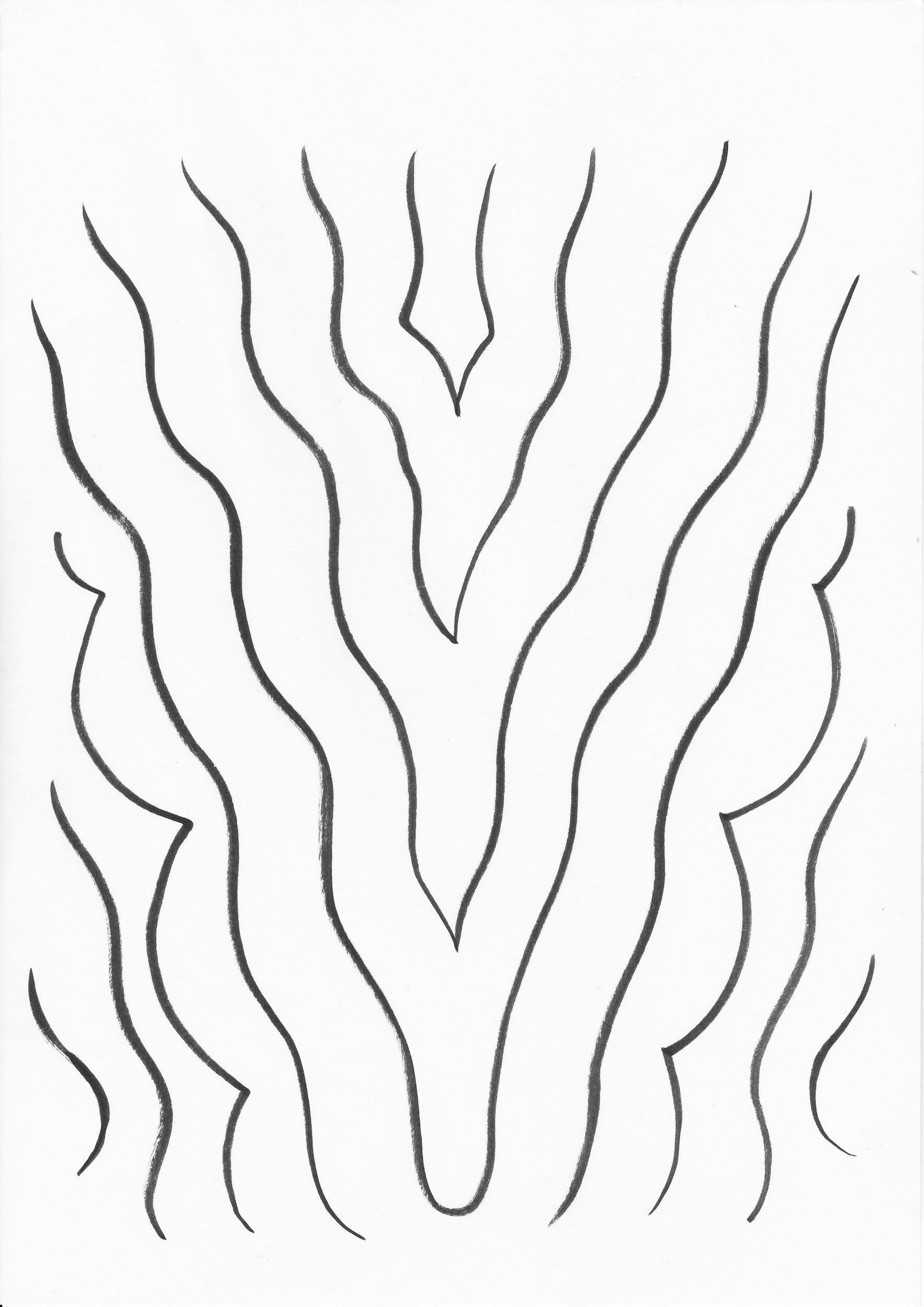
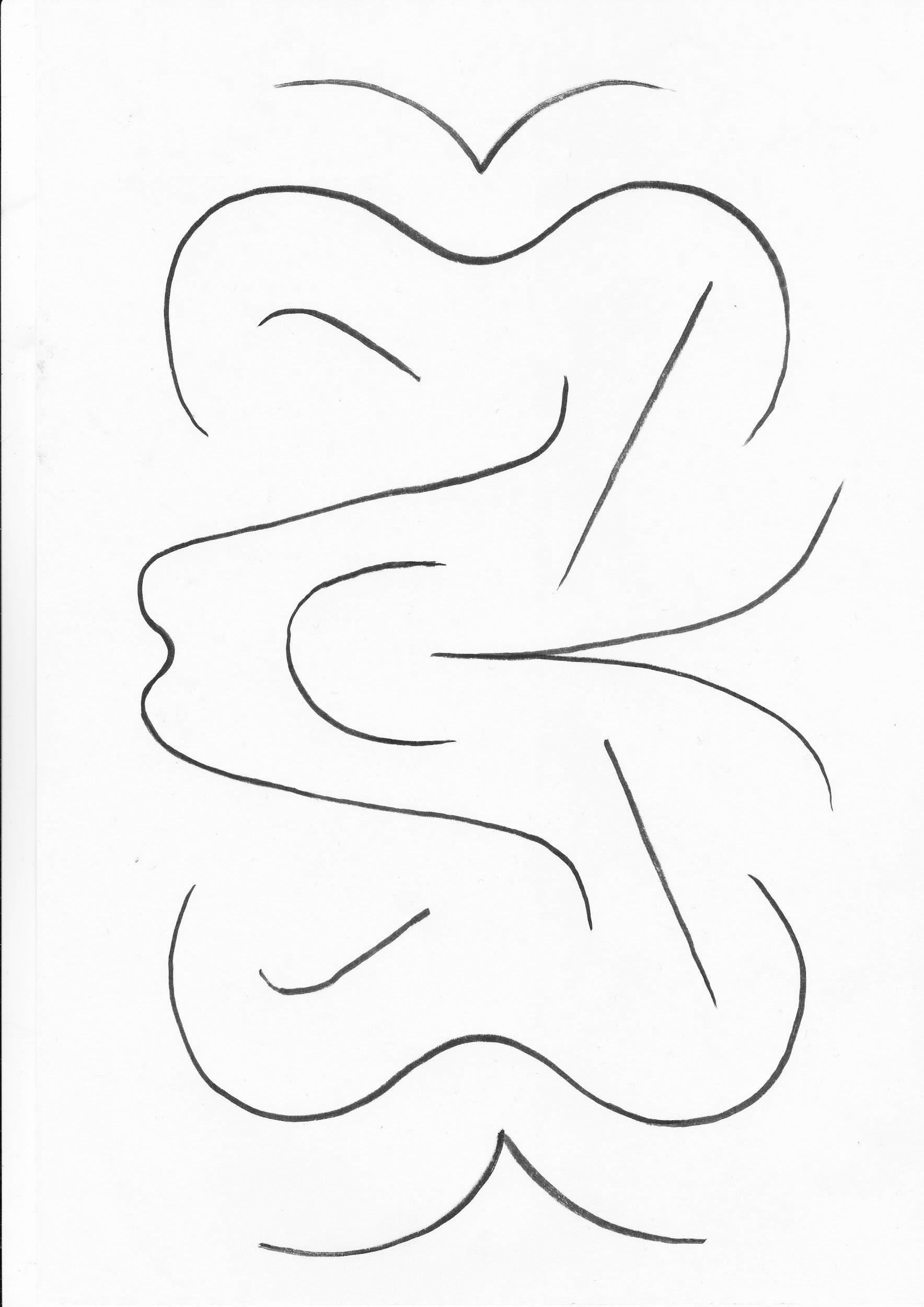
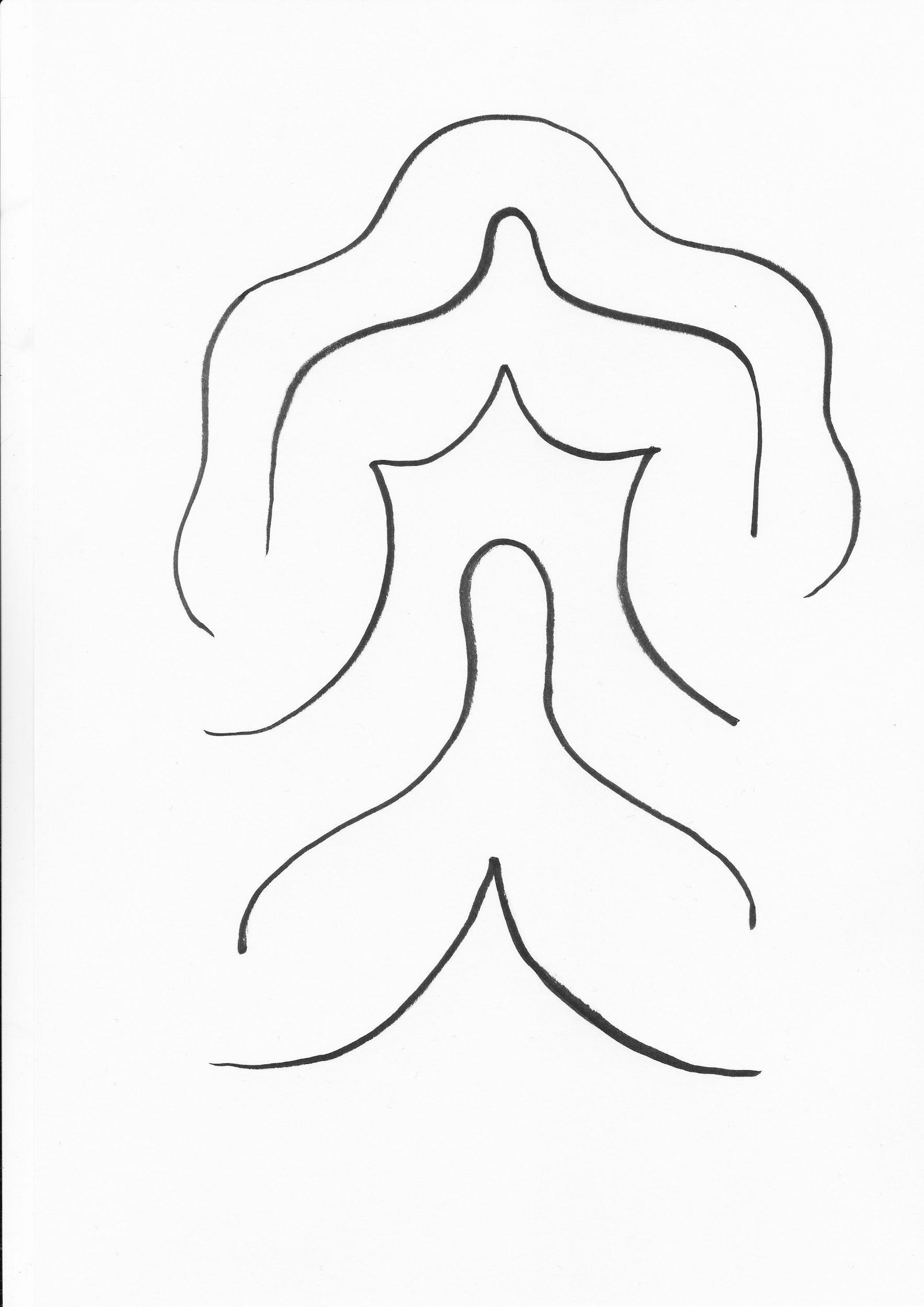




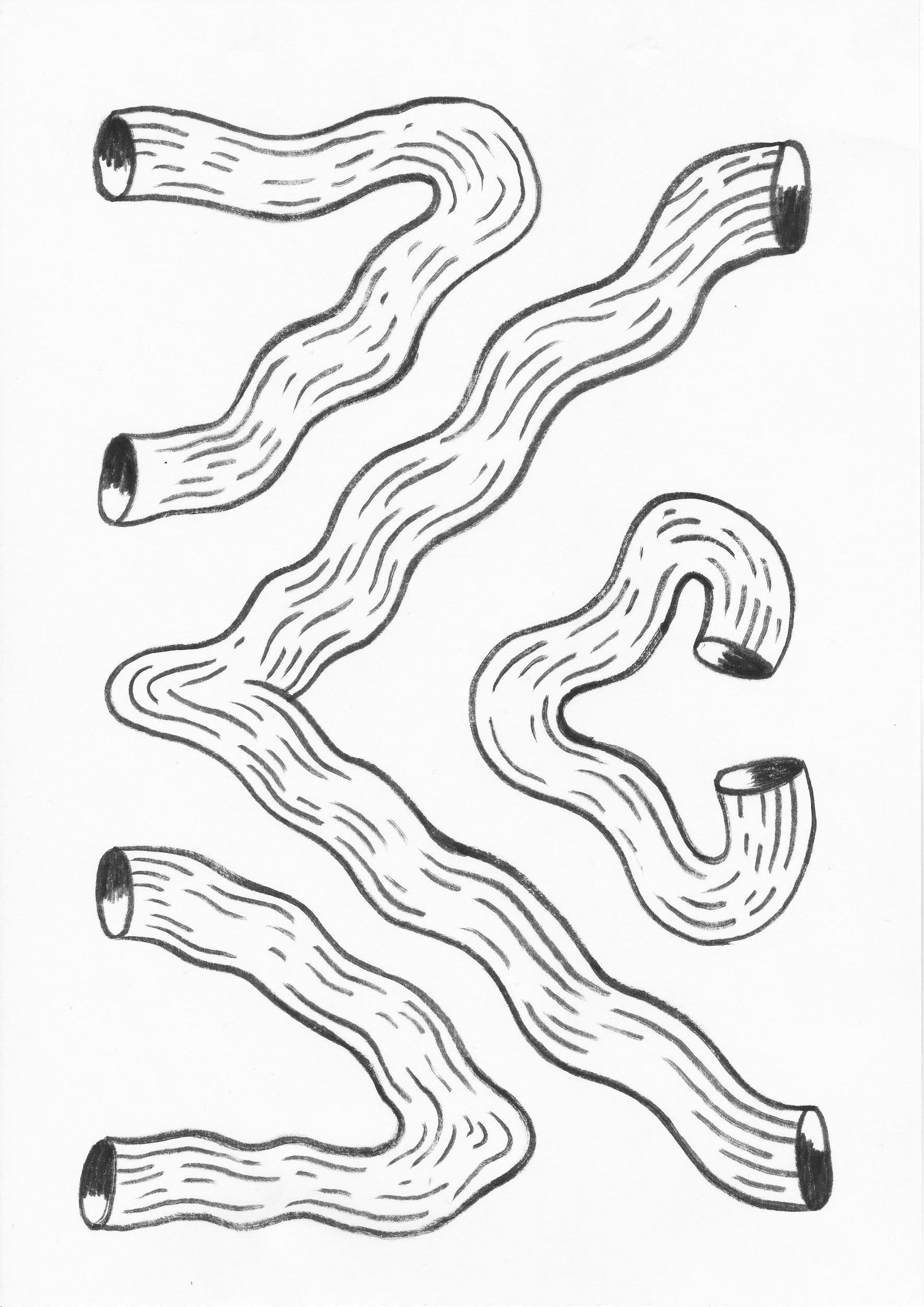

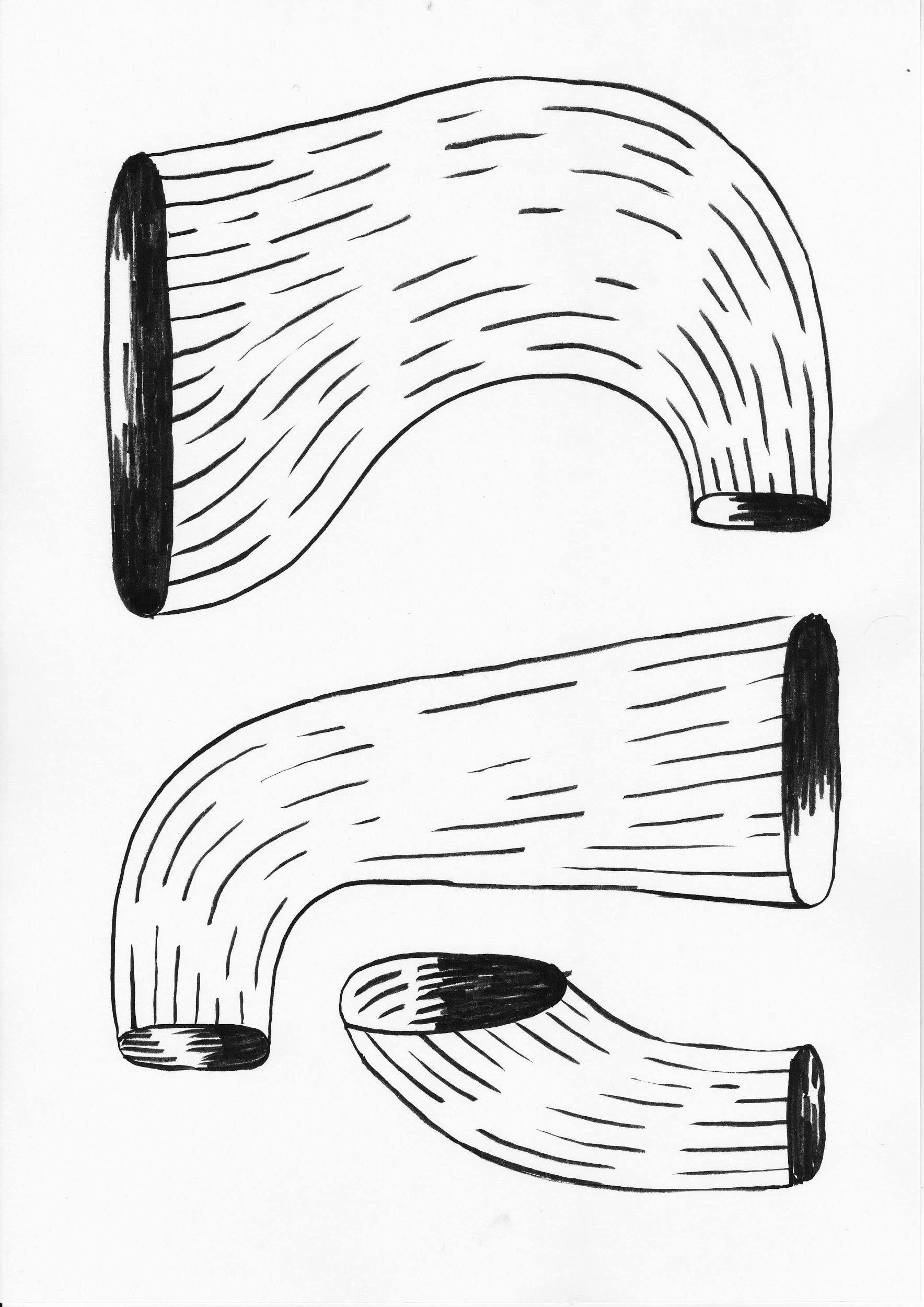
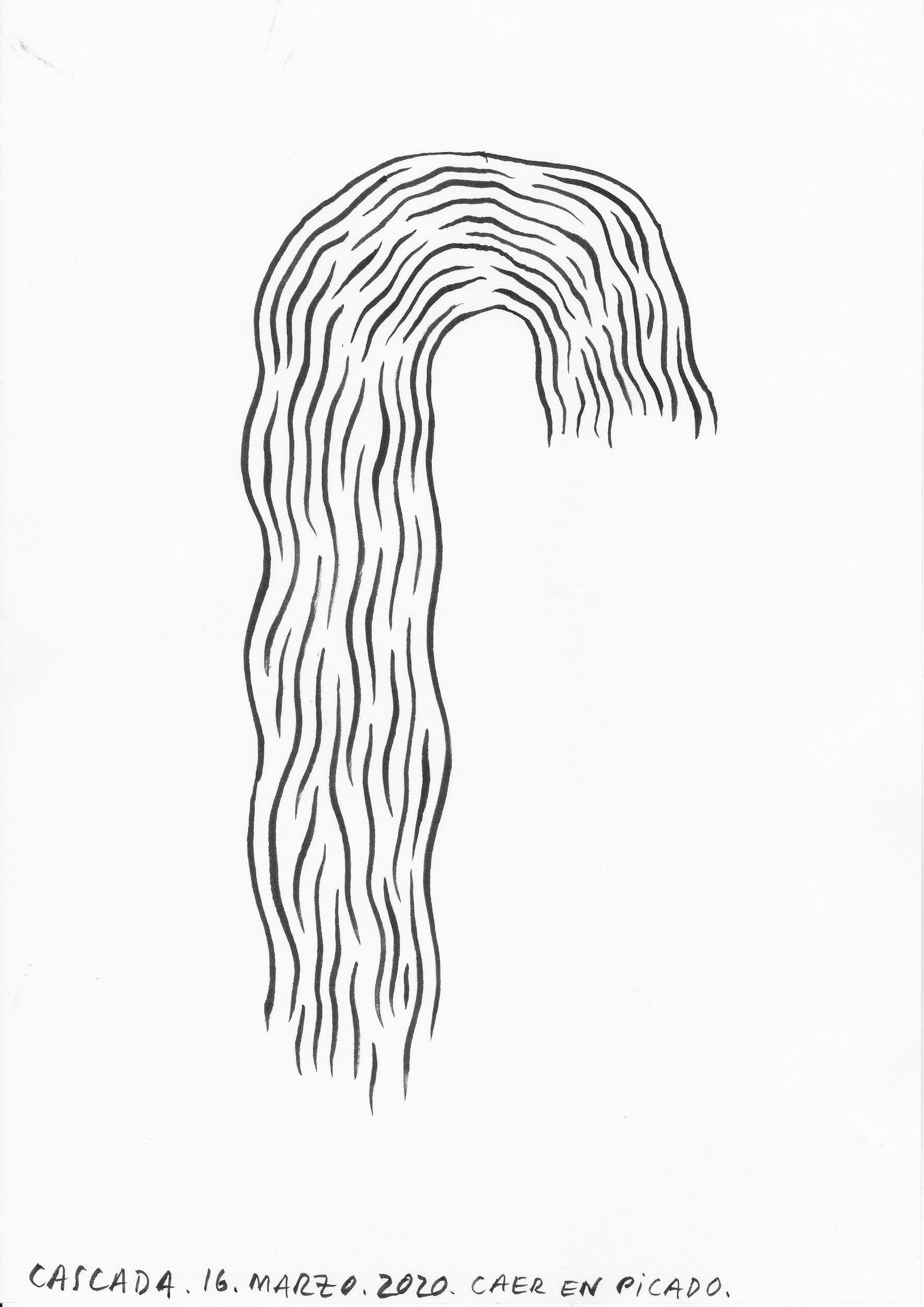
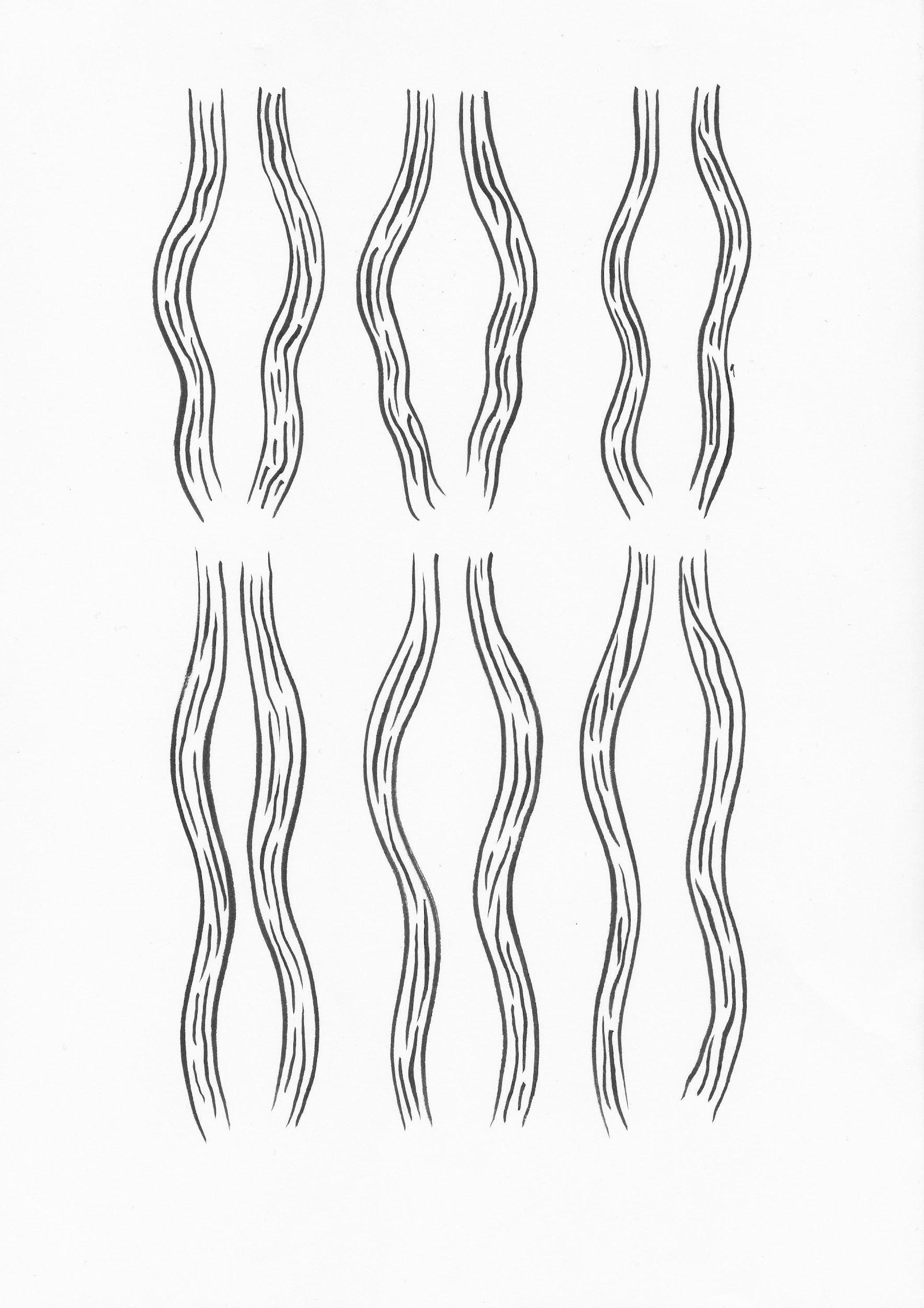

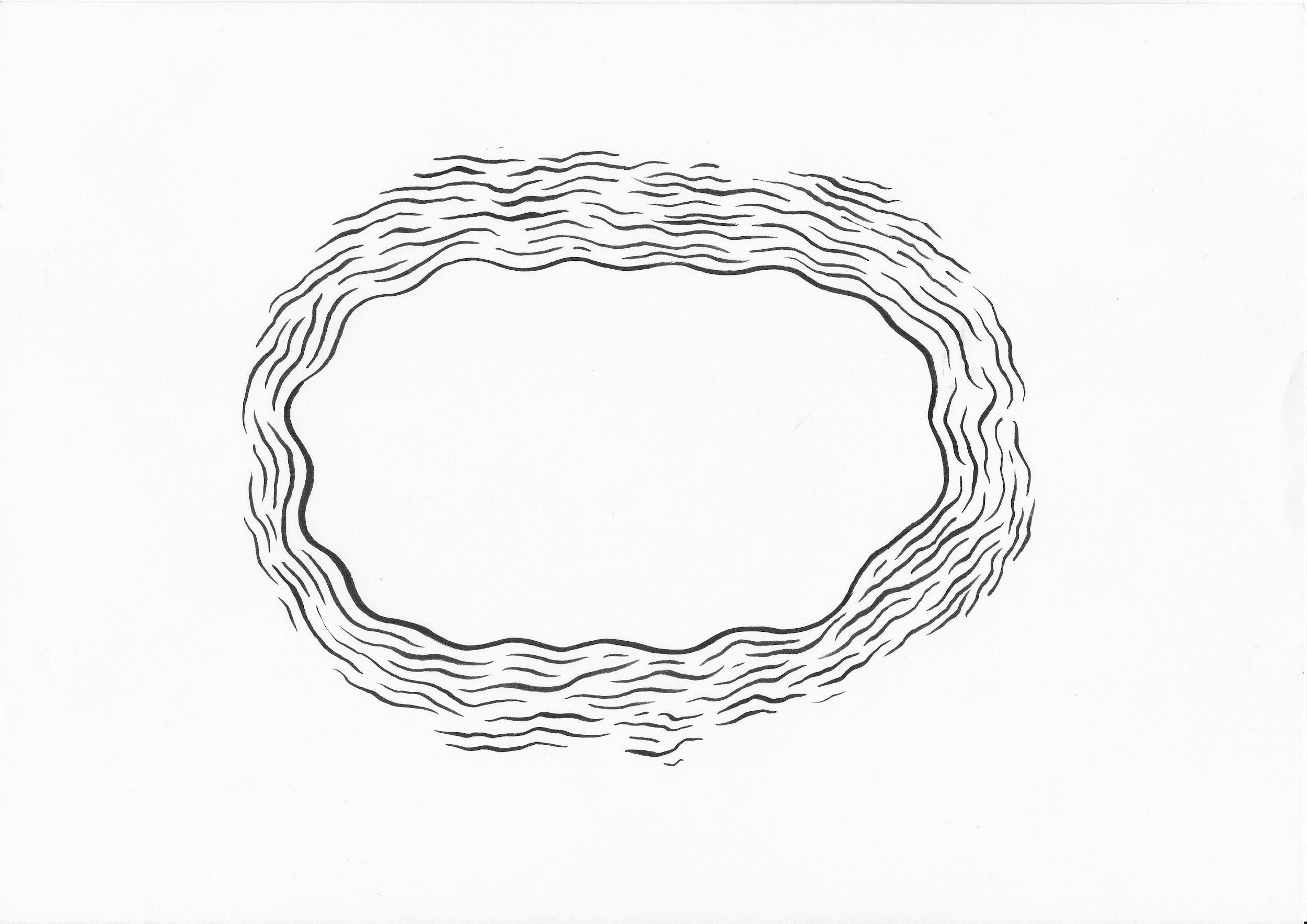

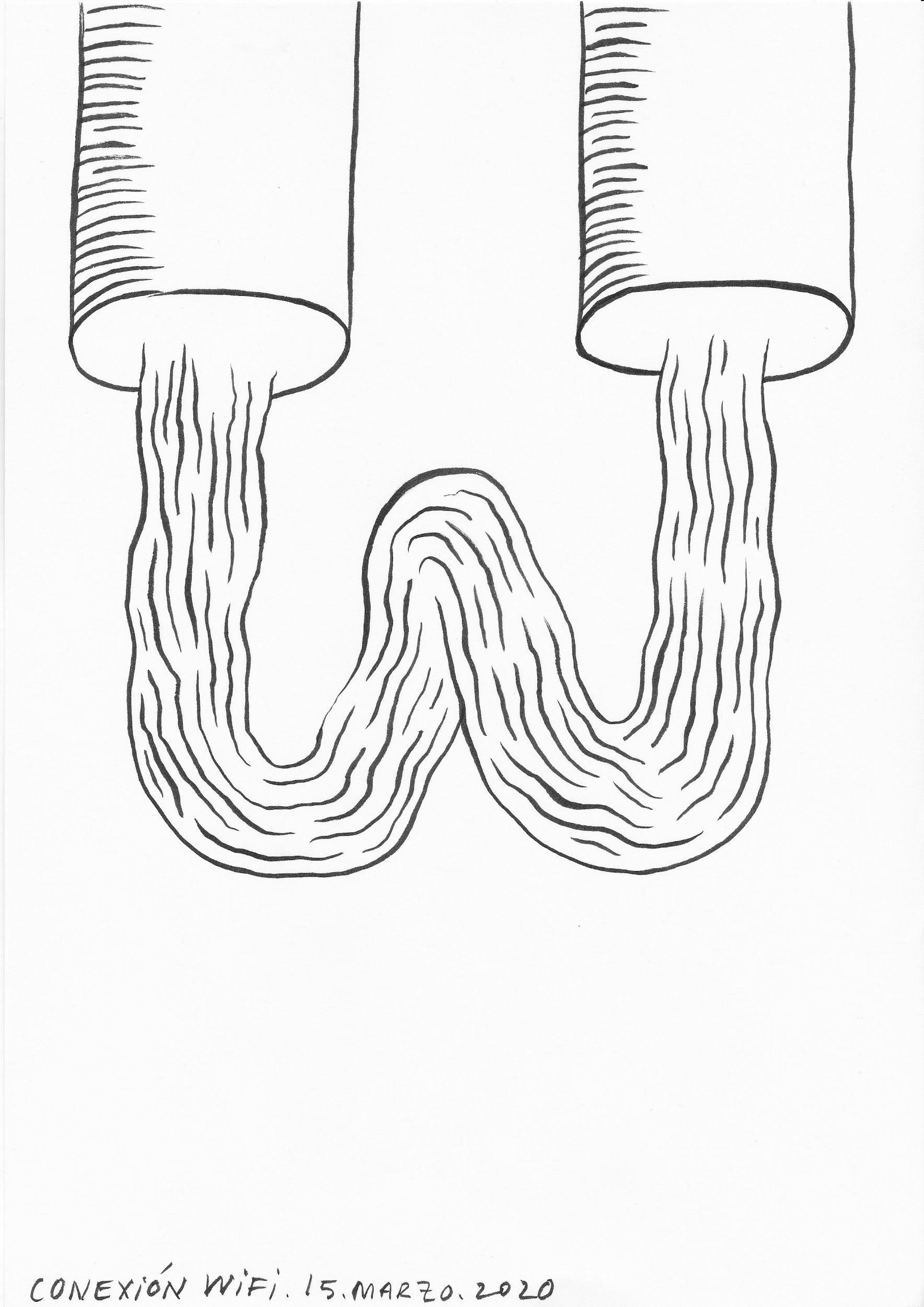
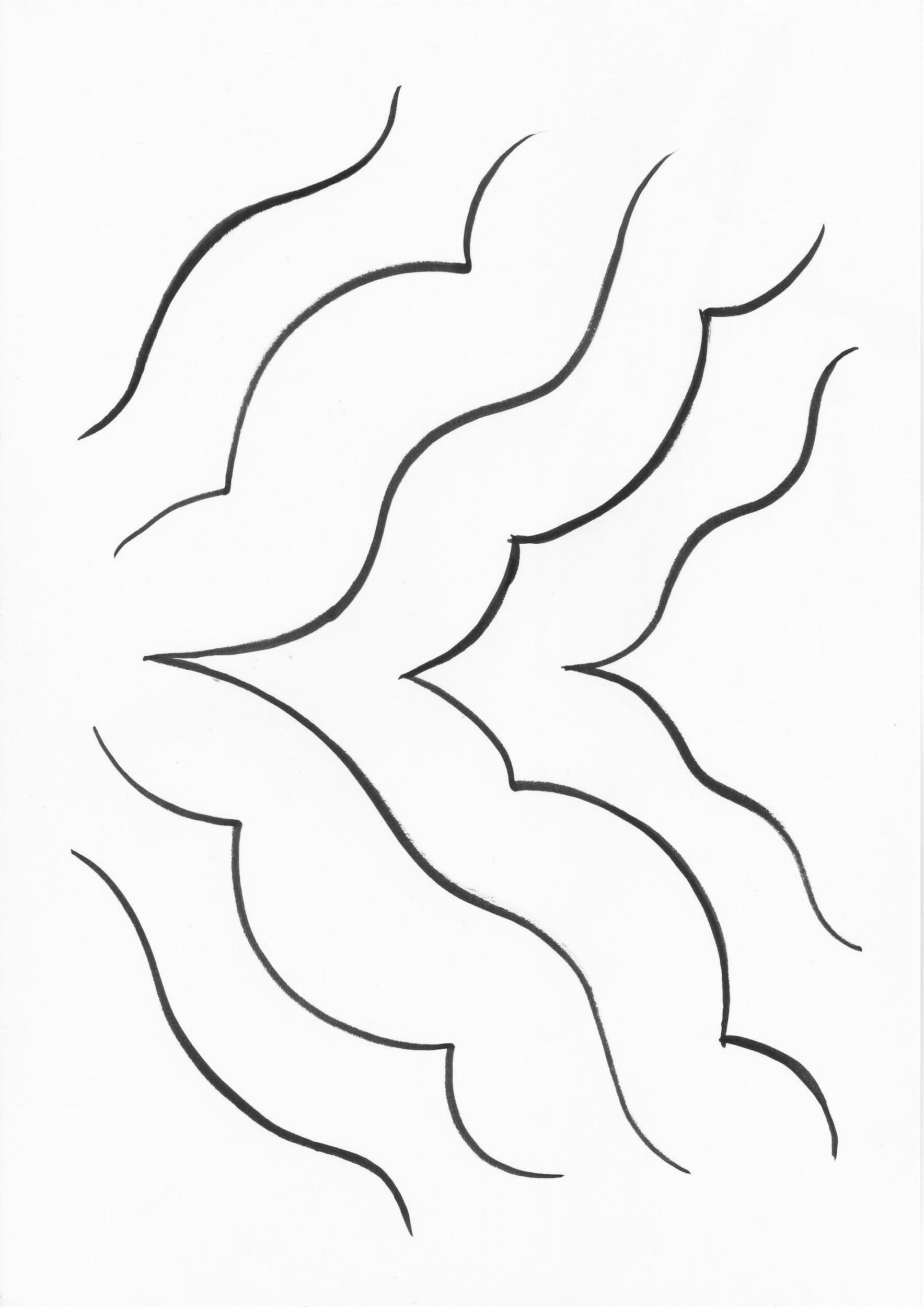
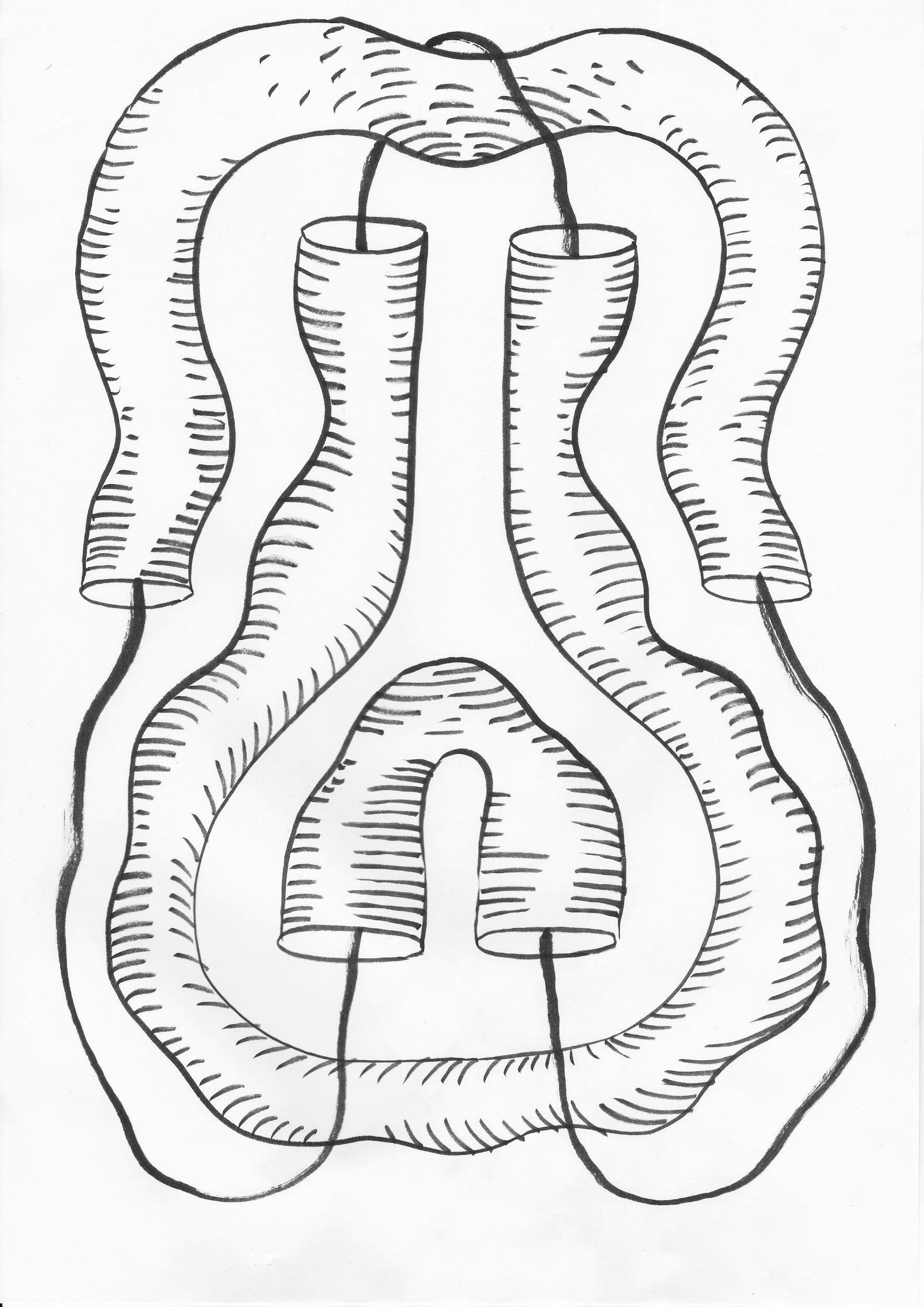
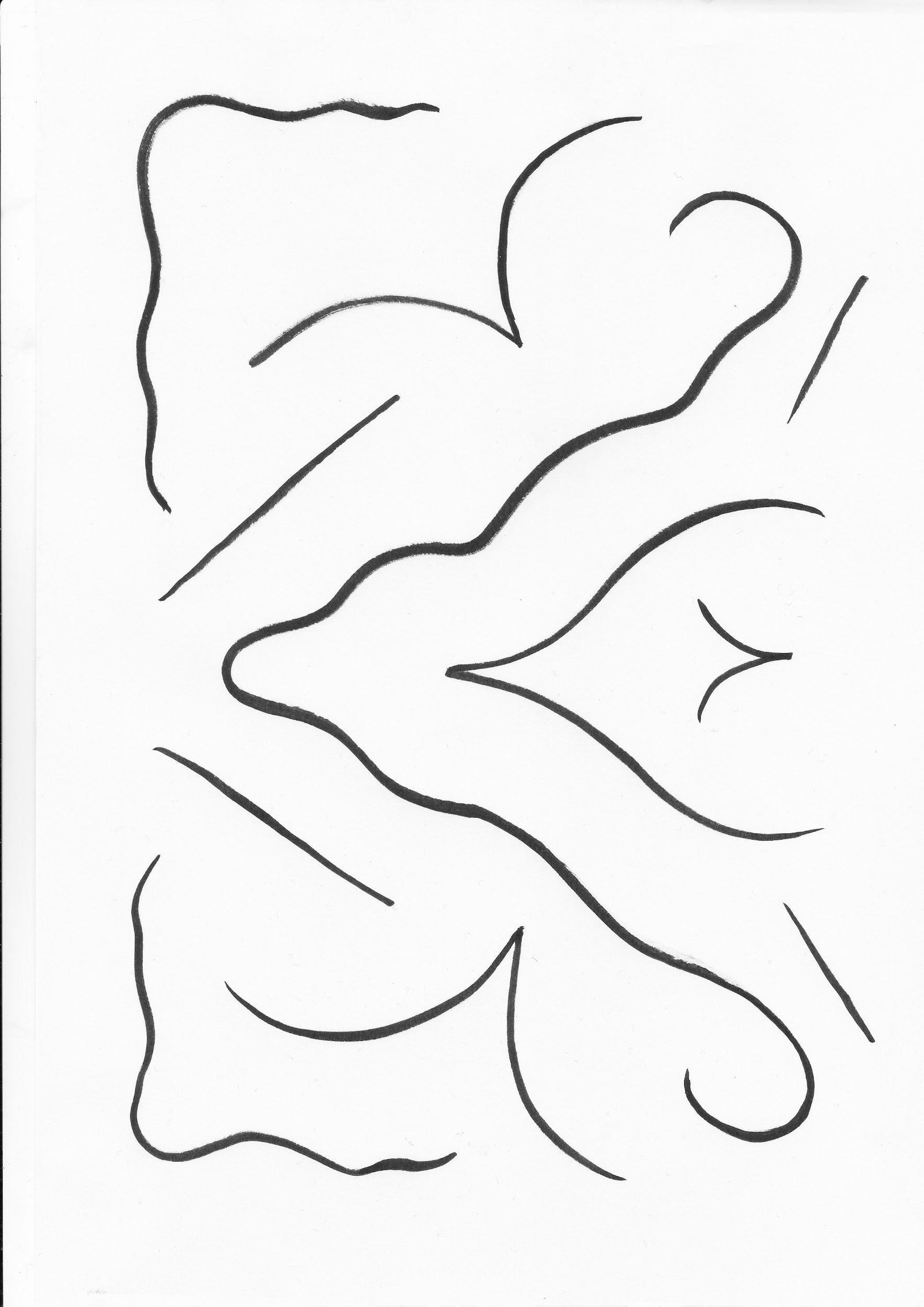




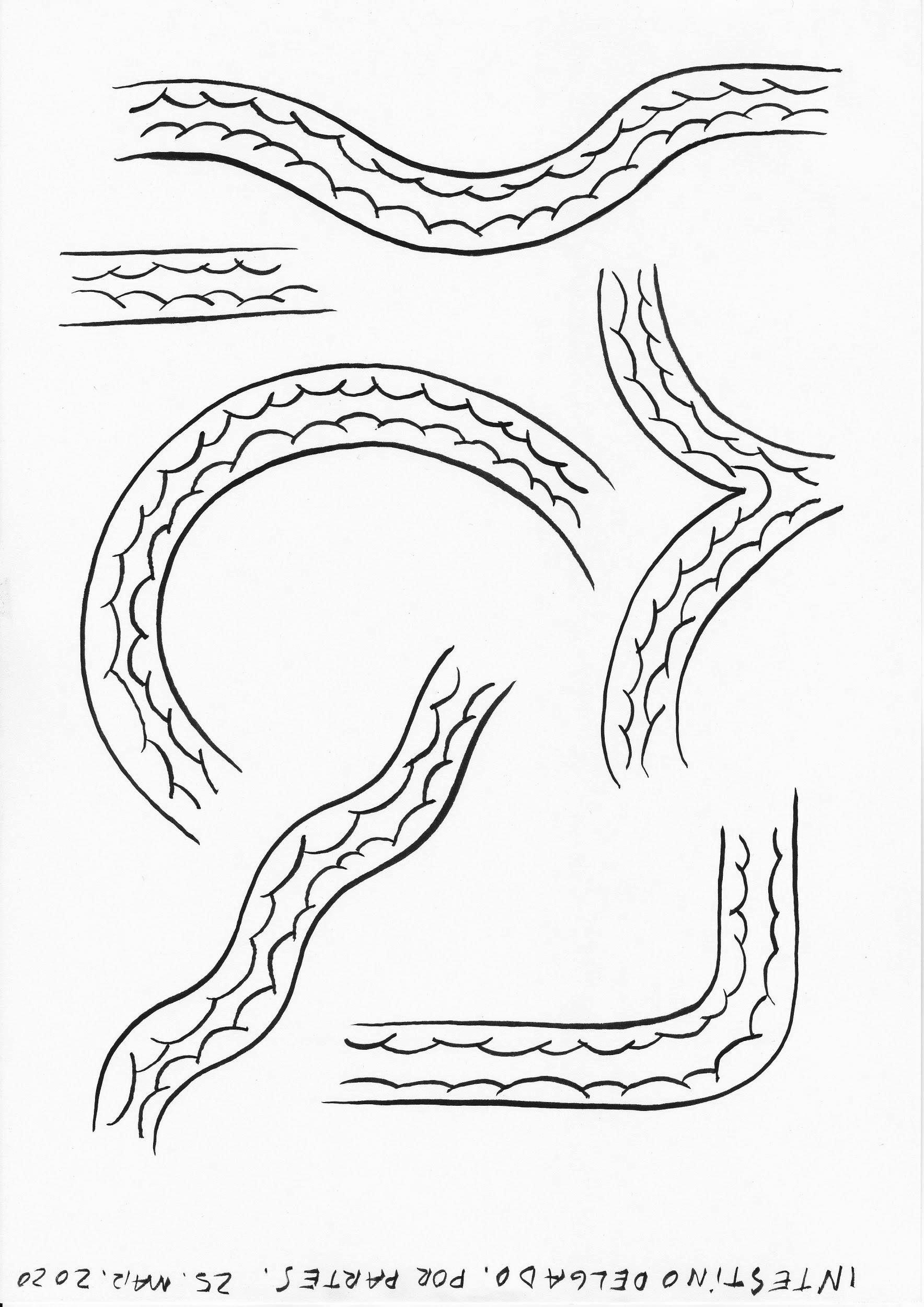



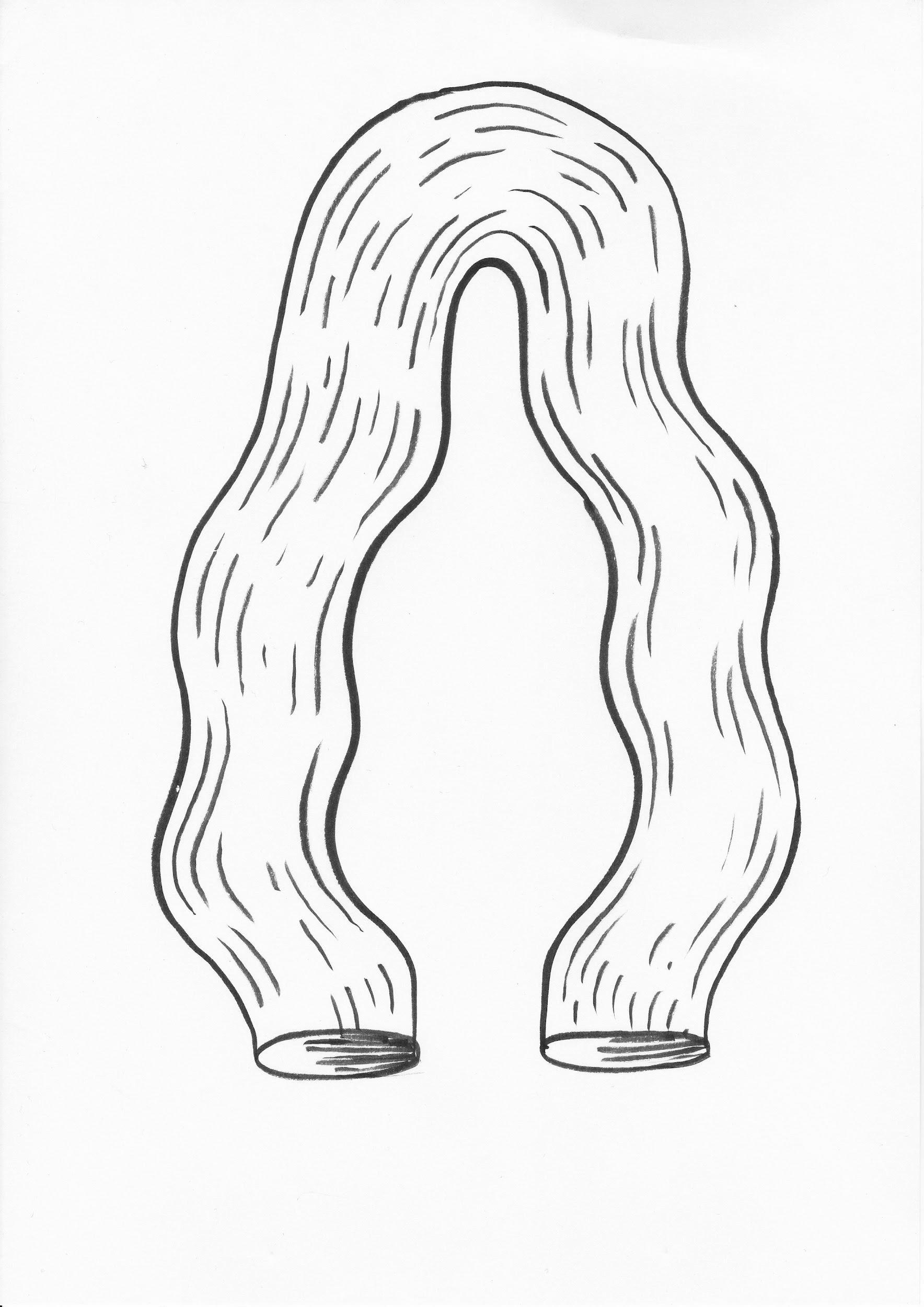

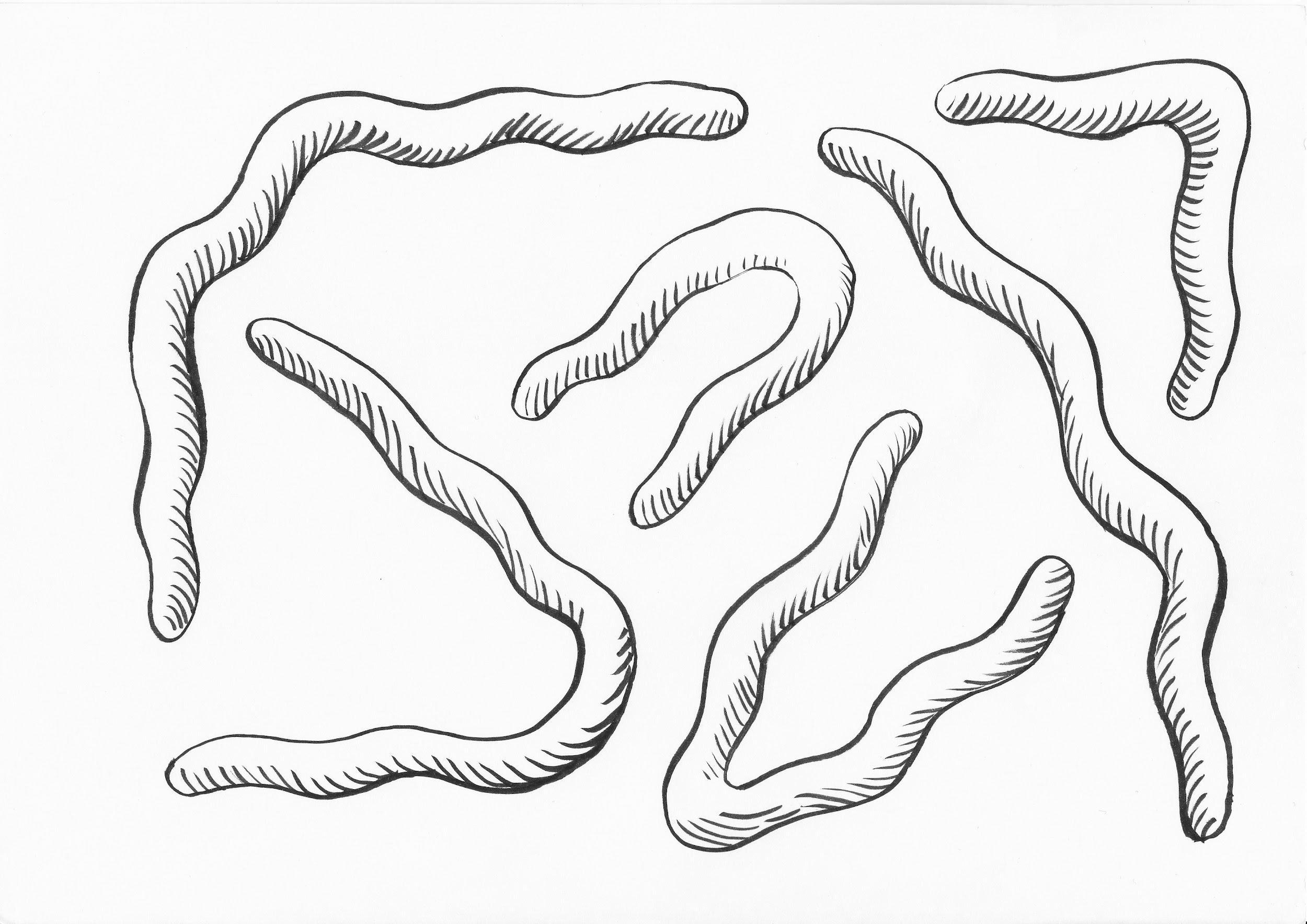













Objects of though
Can we think by drawing?
Coco Moya
(2020- ongoing)
Ink on paper
Size A4
SHOP

